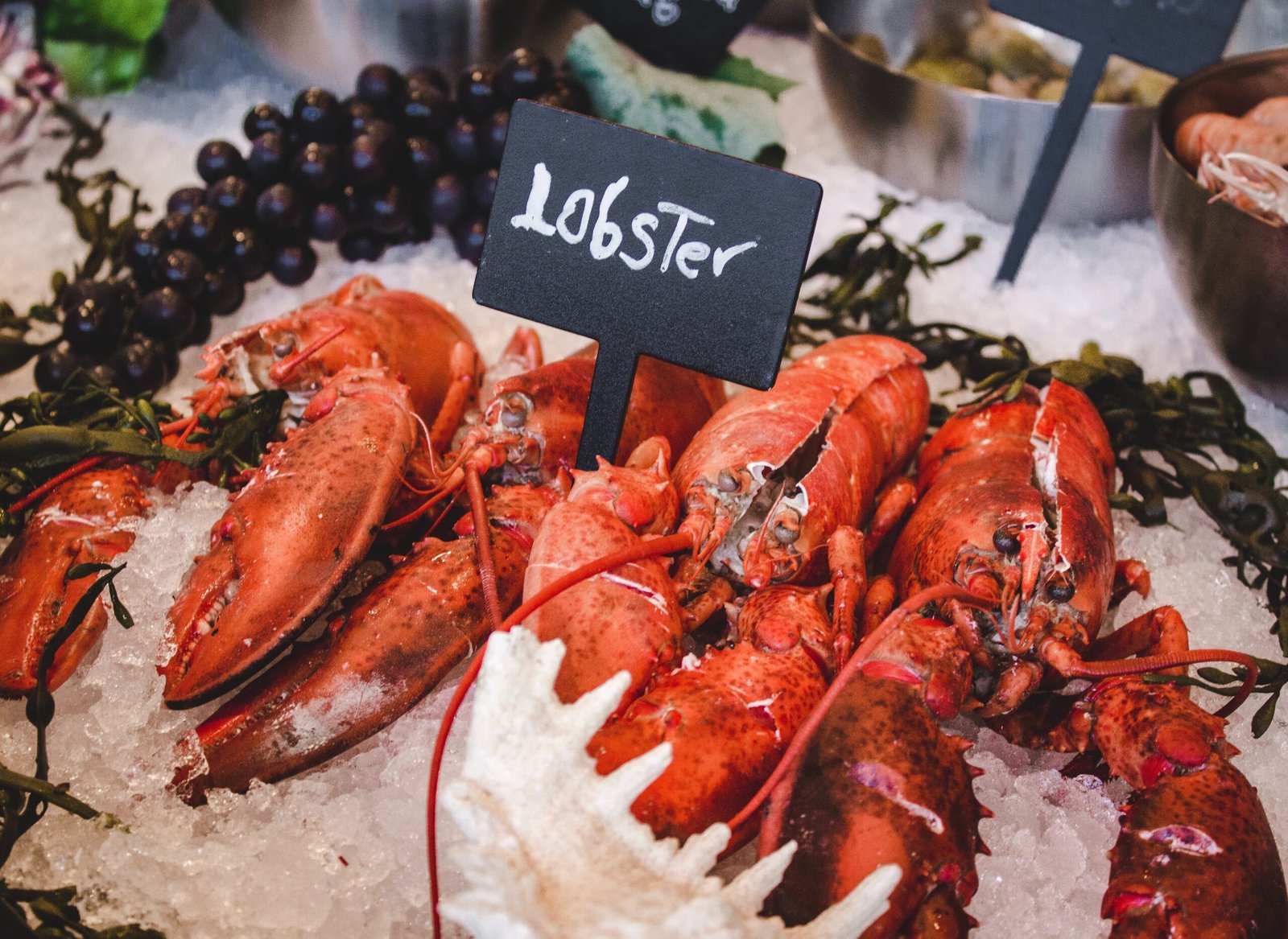Take Me to the Canadian Recipes
Canada’s vast and majestic landscape stretches from the icy peaks of the Rockies to the crashing waves of the Atlantic. But beyond its stunning natural beauty, Canada boasts a hidden gem – Canadian cuisine which is as diverse and delicious as its geography. This isn’t just about maple syrup and poutine (though we’ll get to those too!).
Imagine savoring succulent lobster fresh from the Atlantic coasts, a legacy of thriving fishing communities. Picture hearty stews and wild game dishes, warming you up from the inside out, a reflection of Canada’s long, cold winters. Envision decadent pastries bursting with local berries, a testament to the abundant summer harvests. This is just a glimpse of the culinary delights waiting to be discovered across Canada.
In this article, we’ll embark on a delicious exploration, uncovering how Canada’s fascinating history, from indigenous influences to immigrant ingenuity, has shaped its cuisine. We’ll delve into the impact of geography, where towering mountains and fertile plains yield unique ingredients that grace local plates.
And we’ll explore how the country’s distinct climate, with its harsh winters and short growing seasons, has influenced cooking techniques and food preservation methods.
Take Me to the Canadian Recipes
Canadian Cuisine – 7 Key Takeaways
- Diverse Influences: Canadian cuisine is influenced by British, French, Indigenous, and other global cultures, resulting in a rich tapestry of flavors and dishes unique to various regions of the vast country.
- Seafood Excellence: With its expansive coastline, Canada is renowned for its premium seafood. Atlantic salmon, Pacific salmon, and the world-famous Nova Scotia lobsters are just a few of the ocean’s bounties that grace Canadian tables.
- Maple Syrup: More than just a sweet treat, Canadian maple syrup is a point of national pride. Produced primarily in Quebec, this liquid gold is an essential ingredient in many traditional dishes and desserts.
- Poutine’s Popularity: Originating from Quebec, poutine is a beloved Canadian comfort food. This dish of fries topped with cheese curds and smothered in gravy is a must-try for anyone exploring Canadian culinary delights.
- Game Meats: Due to its vast wilderness areas, game meats like moose, caribou, and venison play a significant role in Canadian cuisine, especially in rural and northern regions.
- Cultural Mosaic: Canada’s multicultural fabric has introduced a variety of dishes from around the world, ensuring that its culinary landscape is continually evolving and embracing global flavors.
- Seasonal and Local: With its varied climate zones, Canada places emphasis on seasonal and local produce. From summer berries in British Columbia to root vegetables that dominate winter meals in the Prairies, the changing seasons dictate the Canadian culinary calendar.
Take Me to the Canadian Recipes
Where is Canada?

Canada occupies much of the continent of North America, sharing a land border with the contiguous United States to the south and the U.S. state of Alaska to the northwest. Canada stretches from the Atlantic Ocean in the east to the Pacific Ocean in the west; to the north lies the Arctic Ocean.
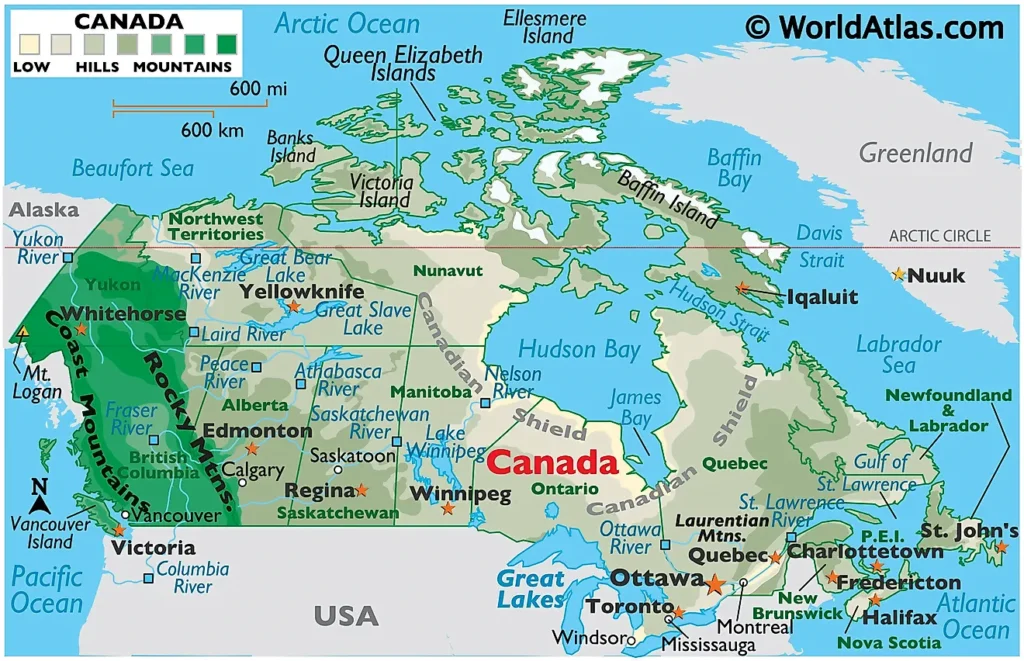
Index to Contents
- Take Me to the Canadian Recipes
- More Articles
- 10 Fascinating Facts about Canada
- Canada’s History and the Effect It Has Had on the Cuisine
- How Canadas Climate and Geography Have Influenced the Cuisine
- Understanding the Essence of Canadian Cuisine
- Canadian Culinary Traditions
- Exploring Canadian Ingredients
- Mastering Canadian Cuisine Cooking Techniques
- Traditional Canadian Food
- Exploring Canadian Street Food
- The Most Popular the Canadian Recipes
- What are the Health Implications of Canadian Cuisine?
- Canada’s National Dish
- Canadian Cuisine – Great Recipes to Try at Home
- Conclusion
- Frequently Asked Questions
More Articles for Your Pleasure
- North and South American Cuisine – A Culinary Expedition
- European Cuisine: Savor the Continent’s Best Culinary Secrets!
- African Cuisine: Discover the Bold Flavors & Global Charm!
- Asian Cuisine Unlock its Secrets – Taste, Health & Global Influence!
- Oceania Cooking: A Culinary Journey Through the Pacific
Savor iconic Canadian Food Recipes – Click on each tantalizing picture to open up the Recipe
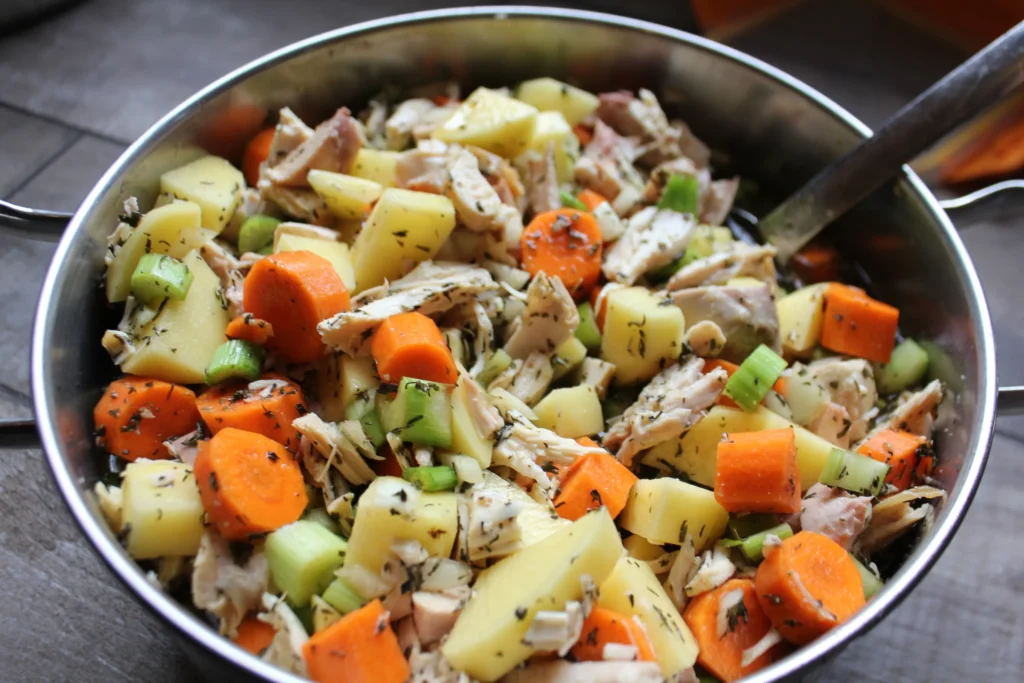


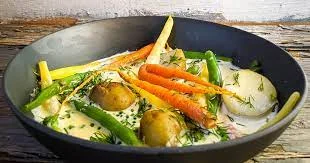

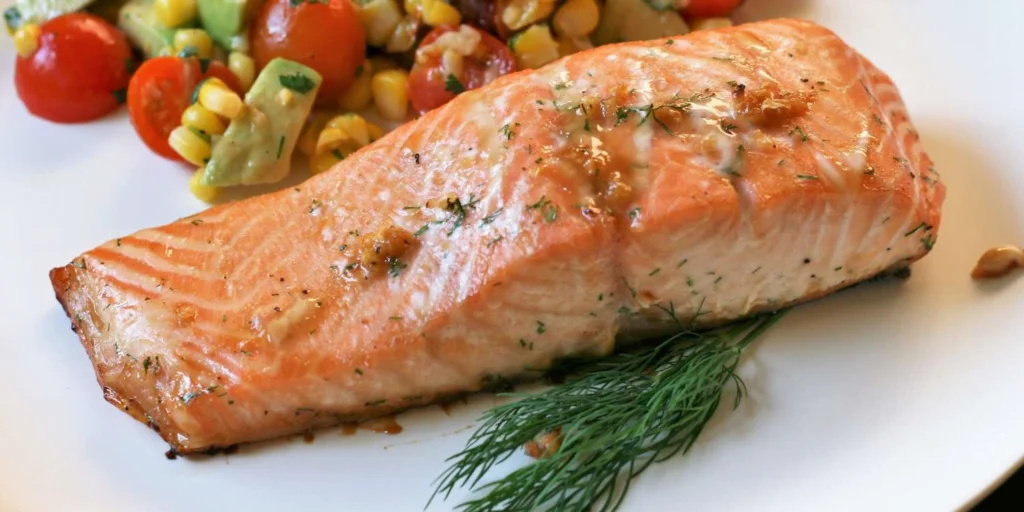



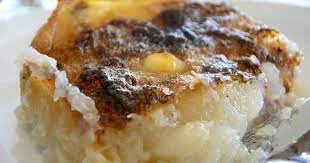


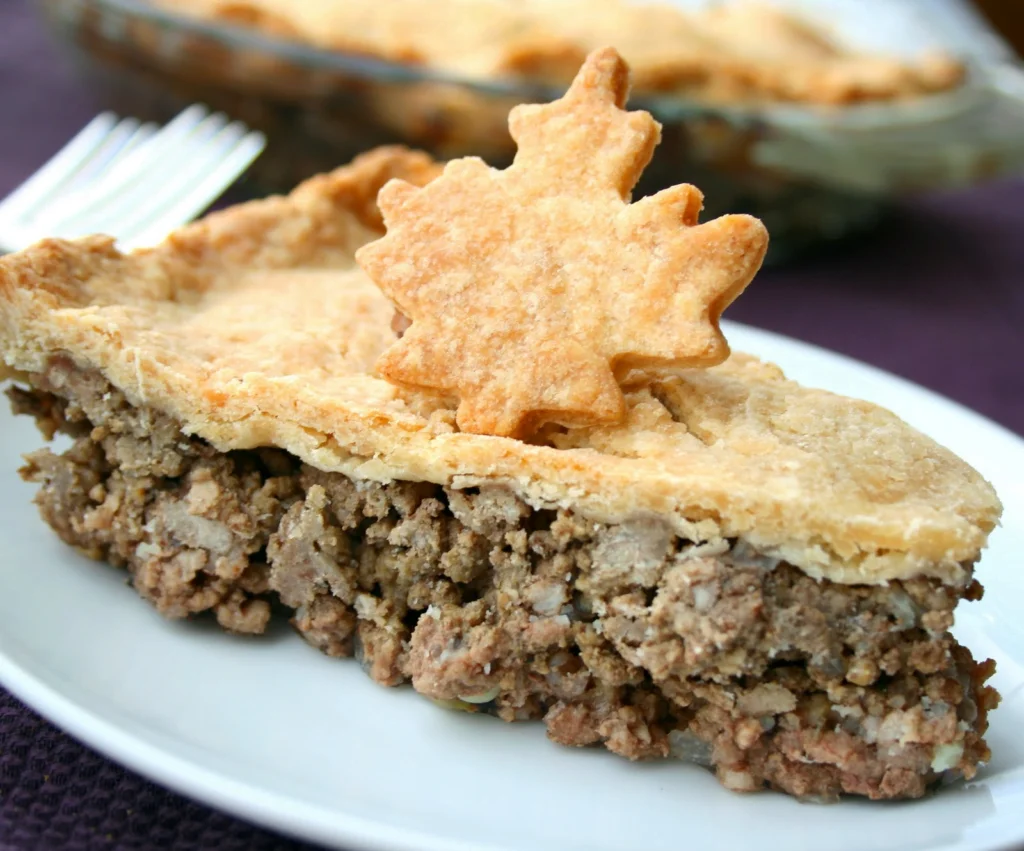
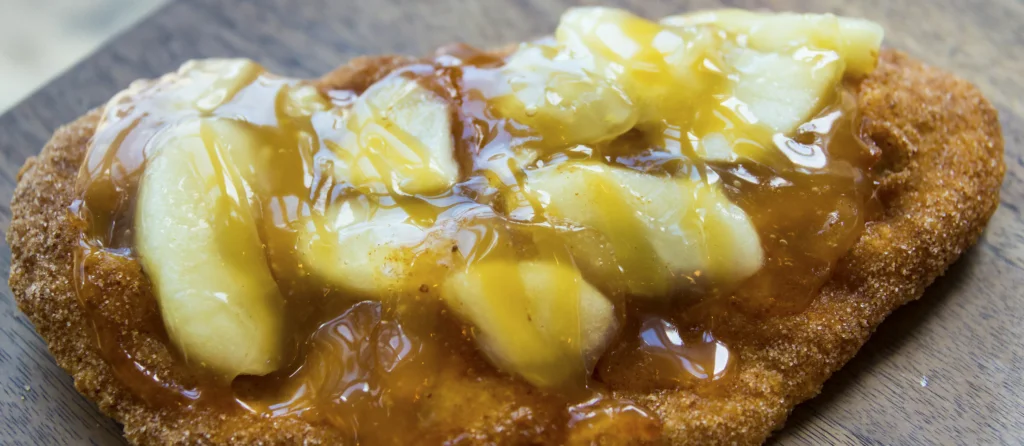
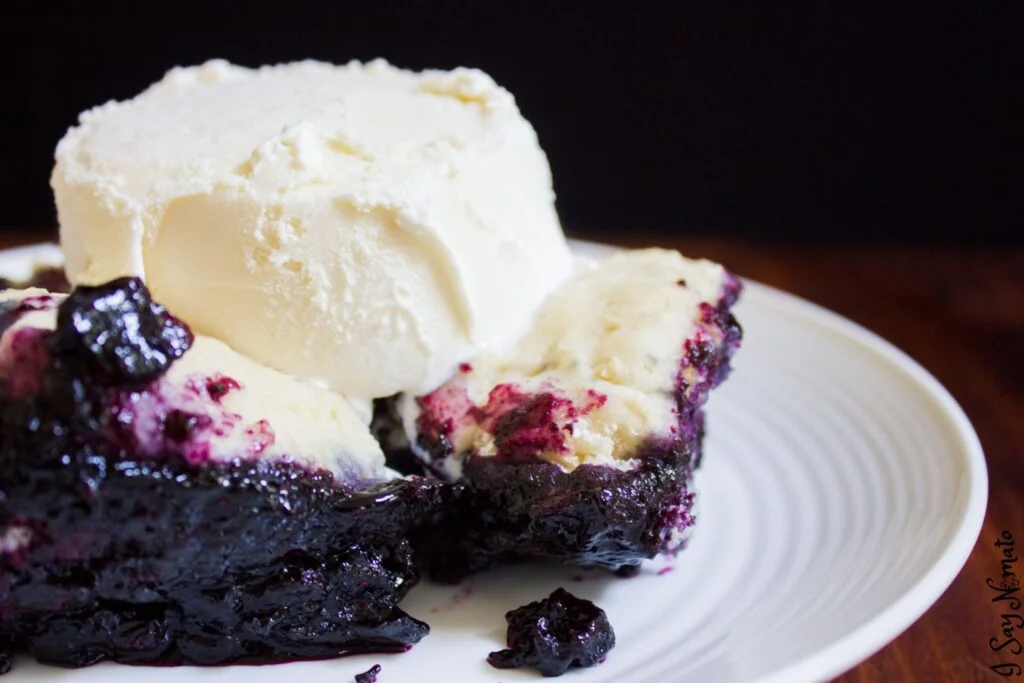



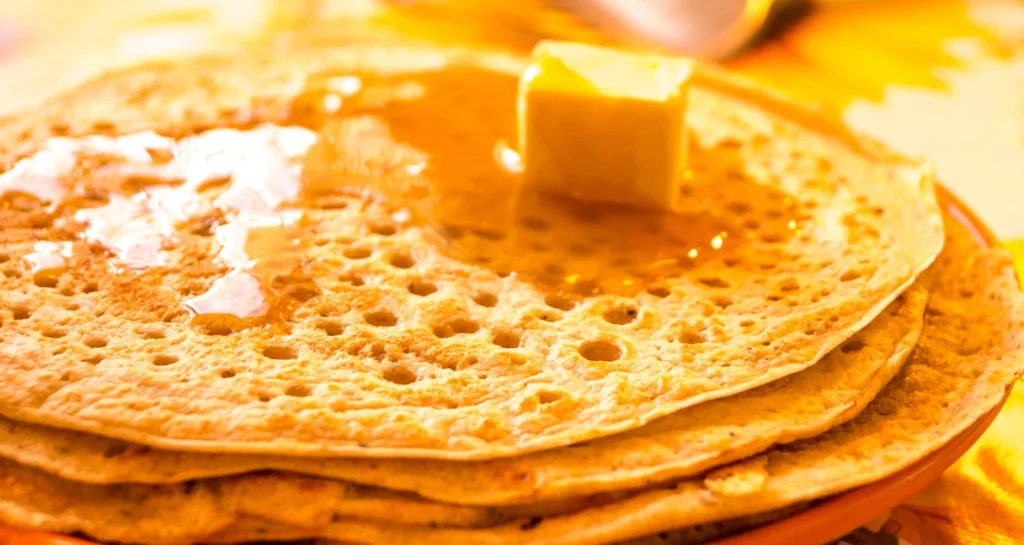

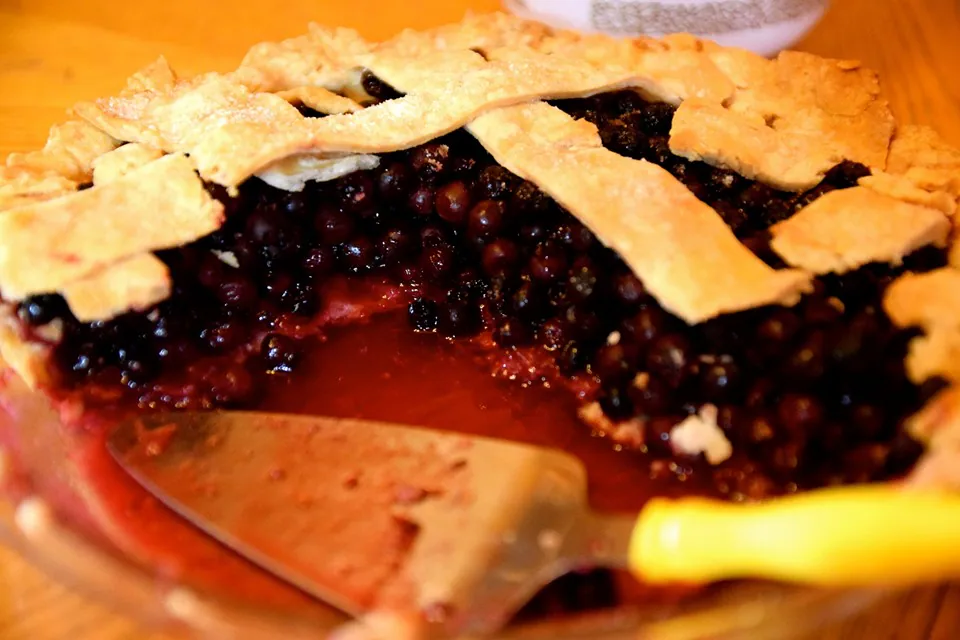
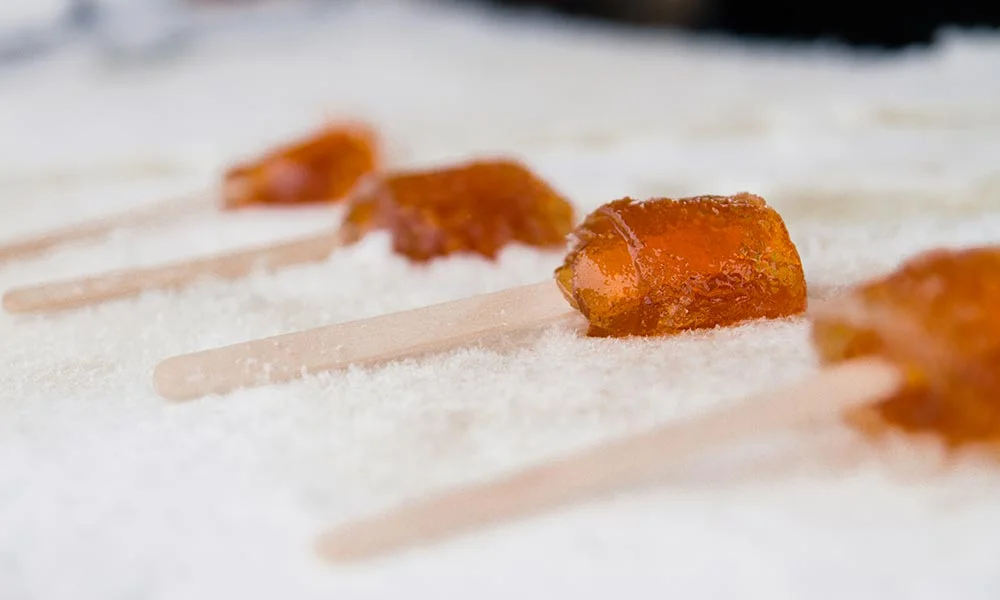
10 Fascinating Facts about Canada

Canada: the land of vast landscapes, friendly faces, and… strange laws? Believe it or not, this seemingly ordinary nation boasts a collection of fascinating, funny, and downright bizarre laws and facts.
Buckle up and get ready to discover a side of Canada you never knew existed!
There are two different languages in Canada
Canada is a bilingual country? This means two languages hold official status: English and French! This fascinating fact shapes everything from street signs to government documents, reflecting Canada’s rich cultural tapestry.
From bustling, French-speaking Montreal to the English charm of Victoria, each region offers a unique linguistic experience. So, whether you’re brushing up on your “bonjour” or practicing your English, Canada welcomes you to explore its vibrant bilingual landscape!
Canada has the longest coastline in the world

Canada lays claim to a watery crown! With a staggering coastline stretching over 243,000 kilometers (151,000 miles), Canada boasts the longest coastline in the world. Imagine – that’s enough shoreline to circle the Earth almost six times!
This incredible statistic is a testament to Canada’s diverse geography, encompassing rugged Pacific cliffs, the vast Atlantic coast, and the island-studded Arctic Archipelago.
Sleeping on Public Property (with a Caveat)
Catching some shuteye in a park might seem harmless, but in Calgary, Alberta, it’s technically illegal to sleep on public property… unless you’re rocking a sleeping bag! Apparently, a good ol’ fashioned nap on a park bench is a no-go, but a cozy night in your sleeping bag is perfectly acceptable.
Restrictions on Gummy Bears (Those Adorable Ones!)

Children (and maybe some adults) might be surprised to learn that some gummy candies are illegal in Canada. Specifically, candies shaped like body parts or weapons are a big no-no. So, those cute gummy bears holding tiny swords? Banned!
Restrictions on… Exploding Toilets?
Ever had a toilet malfunction of epic proportions? In Swift Current, Saskatchewan, you better hope it doesn’t involve an explosion. Yes, you read that right. This city has a law prohibiting the sale or possession of exploding toilets!
Canada’s national animal is actually a Beaver

Forget the cuddly maple leaf, Canada’s true mascot is an industrious engineer – the beaver! Yes, this charismatic rodent, known for its impressive dam-building skills and relentless work ethic, has been
Canada’s national animal since 1975. Beavers have played a significant role in Canadian history, from their valuable fur that fueled the fur trade to their symbolic representation of perseverance and resourcefulness.
A Penny Saved is a Penny Earned (Literally)
Production of the penny ceased in May 2012, and the Royal Canadian Mint ceased distribution of them as of February 4, 2013. However, the coin remains legal tender.
However, the interesting twist is that stores aren’t obligated to give you exact change if it involves a penny. So, that one-cent difference might just round up in the store’s favor.
Nudists Rejoice (with Limits)

Canada boasts several nude beaches where clothing is optional. However, even nudists have to follow some rules! In Wreckhouse, Nova Scotia, nudity is only allowed on specific designated beaches, and don’t even think about skinny-dipping in public; that’s a big no-no!
Polar Bears Take Priority (As They Should!)
If you encounter a polar bear in Manitoba, you’re legally obligated to stay at least 50 meters away. This one might seem like common sense, but hey, it’s the law! Safety first, especially when dealing with giant furry predators.
Speak Up or Pay Up!
In Trois-Rivières, Quebec, the legislature unanimously adopted a motion calling on store clerks to stick with a simple “bonjour” when addressing customers instead of the hybrid “bonjour/hi” often heard in Montreal.
Failing to greet someone in French might land you in hot water (or should we say hot maple syrup?). This law, although rarely enforced, is a testament to the importance of language and cultural identity in Canada.
No Loud Noises After 10 pm (Unless You’re a Baby!)
Peace and quiet are valued commodities in Canada. Several municipalities have bylaws restricting noise levels after 10 pm. However, there’s a hilarious exception – crying babies! Seems like even lawmakers understand that you can’t control a fussy infant.
Beware the Killer Clown Law

Clowns are supposed to be fun, right? Well, in Delta, British Columbia, there’s a law prohibiting anyone over the age of 19 from wearing a mask in public unless it’s for a specific reason (like Halloween). So, if you’re planning a surprise clown birthday party, this might not be the place to do it!
Canada might seem like your typical friendly neighbor, but beneath the surface lies a treasure trove of quirky laws and fascinating facts. So, the next time you think you know all about Canada, think again! This unique country is full of surprises waiting to be discovered.
Canada’s History and the Effect It Has Had on the Cuisine

Canada’s cuisine is a fascinating tapestry woven from the threads of history. Today, we embark on a delicious journey, exploring how different eras shaped the flavors we enjoy today.
From the Land to the Table: Indigenous Influence (Pre-Contact to 16th Century)
For millennia, Indigenous peoples lived in harmony with the land, and their culinary traditions reflected this deep connection. Dishes like bannock, a hearty flatbread, and pemmican, a portable mix of dried meat and berries, were staples.
These ingenious creations sustained them and honored the bounty of the land. Indigenous ingredients like maple syrup, wild rice, and Saskatoon berries continue to be celebrated in modern Canadian cuisine.
A World of Flavors Arrives: European Settlement (16th to 17th Centuries)

With the arrival of European settlers came a wave of new flavors. French settlers brought their love of rich sauces and creamy dishes, while the English introduced classics like fish and chips.
These influences didn’t simply remain unchanged; they adapted and thrived. The iconic poutine, a Canadian comfort food of French fries smothered in gravy and cheese curds, is a testament to this culinary fusion.
A Melting Pot of Delights: Immigrant Contributions (18th Century Onward)
Canada’s rich history of immigration has significantly impacted its food scene. Waves of immigrants from China, Italy, India, and beyond brought their culinary traditions, enriching the national palate.
From the delicate flavors of Chinese dumplings to the robust spices of Indian curries, these influences have broadened Canada’s culinary horizons.
A Look to the Future: Modern Trends

Today, Canadian cuisine is experiencing a renaissance. The “farm-to-table” movement emphasizes fresh, locally-sourced ingredients, and indigenous ingredients are being rediscovered and celebrated. This focus on sustainability and tradition ensures that Canada’s culinary story will continue to evolve, offering exciting flavors for generations to come.
So, the next time you savor a Canadian dish, take a moment to appreciate the rich history that brought it to your plate. It’s a journey through time, a delicious exploration of a nation’s cultural heritage.
References
How Canadas Climate and Geography Have Influenced the Cuisine

Canada’s vastness is legendary, stretching from the Atlantic’s crashing waves to the Pacific’s serene shores. Mountains, forests, prairies, and coastlines – each region boasts a unique landscape that has dramatically shaped its culinary identity.
Let’s embark on a delicious exploration, uncovering how geography has influenced the diverse flavors of Canada.
A Bounty from the Sea: The Atlantic Provinces

Rugged coastlines and fertile soil define the Atlantic provinces. Here, the ocean generously offers an abundance of seafood: succulent lobster, sweet scallops, plump mussels, and flaky cod.
These treasures take center stage in iconic dishes like hearty fish chowders, crispy fish cakes, and lively seafood boils. The land contributes its bounty as well, with blueberries and wild berries adding bursts of sweetness to the table.
French Flair Meets Local Flavor: Quebec

Rich farmland and the mighty St. Lawrence River nourish Quebec. French influence reigns supreme here, evident in the province’s deep love for rich sauces and creamy dishes. Poutine, that glorious combination of fries, cheese curds, and gravy, is a national icon born in Quebec.
Savory tourtière, a decadent meat pie, is another must-try. And let’s not forget maple syrup, a quintessential Quebec product that sweetens countless dishes.
A Melting Pot of Flavors: Ontario

The Great Lakes provide a watery embrace for Ontario, while fertile soil allows a diverse range of agriculture to flourish. Toronto and other major cities boast a vibrant multicultural scene, reflected in their restaurant offerings.
From delectable Indian curries to flavorful Ethiopian stews, the world is on your plate. But Ontario boasts some unique specialties too – don’t miss the classic peameal bacon sandwich, the gooey delight of butter tarts, or the award-winning Ontario wines.
Beef Country and Beyond: The Prairie Provinces

Vast plains, ranches, and endless wheat fields define the Prairies. Here, Alberta beef reigns supreme, renowned for its exceptional quality. Bison burgers offer a taste of the wild, while hearty perogies and smoky kielbasa sausages warm you from the inside out.
From the Ocean to the Farm: British Columbia

British Columbia boasts a dramatic coastline teeming with life. Salmon, halibut, and Dungeness crab are just a few of the seafood stars gracing local menus. The farm-to-table movement thrives here, with fresh produce, artisanal cheeses, and delicious wines taking center stage.
Vancouver, a cosmopolitan city, offers a vibrant Asian influence, with sushi and fusion cuisine flourishing.
A Taste of Tradition: The North

The Arctic tundra, vast boreal forests, and pristine lakes paint the landscape of Canada’s Northern Territories. Here, indigenous influences shine brightest. Inuit and First Nations cuisine relies on caribou, a lean and flavorful meat, as well as the delicate arctic char fish.
Bannock, a hearty flatbread, remains a staple. Foraging plays a crucial role, with berries, mushrooms, and wild game forming the foundation of traditional diets.
Seasons and Sustainability: Shaping Flavors
Canada’s extreme climate significantly impacts its food culture. Harsh winters necessitate preservation techniques like curing meats, pickling vegetables, and canning goods to ensure year-round sustenance.
Short growing seasons make summers precious, leading to joyful celebrations like maple syrup festivals that mark the fleeting abundance of fresh produce.
Local Love: A Celebration of Freshness
Across Canada, a strong emphasis on farm-to-table dining ensures that the freshest, most seasonal ingredients grace your plate. Foraged treasures like mushrooms, fiddleheads (unfurled fern shoots), and wild berries add a touch of nature’s bounty.
Game meats like moose, venison, and rabbit offer a taste of the wild. And of course, no exploration of Canadian cuisine is complete without mentioning maple syrup, a national icon that elevates countless dishes.
Canada’s cuisine is a fascinating mosaic, a tapestry woven from the threads of indigenous traditions, immigrant influences, and the unique flavors of each region. From the Atlantic’s bounty to the Pacific’s fresh catch, every bite tells a story of this vast and diverse land.
So, next time you explore Canada, be sure to embark on a culinary adventure as well – your taste buds will thank you!
References
Understanding the Essence of Canadian Cuisine

Canadian cuisine is as vast and diverse as its sprawling landscape. From the Atlantic to the Pacific coastlines, through the Prairie farmlands and up to the Arctic tundra, every region offers a unique palate shaped by its history, climate, and the people who’ve called it home.
At its core, Canadian cuisine is a culinary mosaic, drawing on the Indigenous traditions that preceded European colonization and the varied influences brought by British, French, and subsequent waves of immigrants from across the globe. Each has interwoven their own traditions and ingredients, creating a rich tapestry that represents Canada’s multicultural identity.
The Indigenous First Nation Profoundly Influenced Canadian Cuisine

The Indigenous peoples, the First Nations, Métis, and Inuit, have contributed immensely to the foundational palate of Canadian cuisine. They introduced the art of smoking fish, game hunting, and the use of native berries and plants – practices and ingredients still cherished and used today.
The French brought with them the art of pastries and the love for rich stews and soups, most famously Quebec’s tourtière and pea soup. The British influence is seen in the form of pies, roasts, and the quintessential ‘tea-time’. But the story doesn’t end there. With each wave of immigration, from Italians to Chinese to Lebanese and beyond, new flavors and techniques have found a home in Canadian kitchens, leading to a culinary scene that’s dynamic and always evolving.
Yet, amidst this diversity, there’s a unifying theme – a love for local and seasonal produce. Whether it’s the sweet liquid gold of maple syrup tapped in early spring, the wild salmon caught off the coast of British Columbia, or the hearty root vegetables that sustain through the cold winters, Canadians take pride in their local produce, ensuring that their dishes are both a reflection of the land and the myriad cultures that inhabit it.
In essence, to understand Canadian cuisine is to embrace its rich history, its diversity, and its deep-rooted connection to the vast and varied land.
Canadian Culinary Traditions

Canada, with its expansive landscapes stretching from the Atlantic to the Pacific and up to the Arctic, offers a rich culinary tapestry reflective of its diverse regions and historical influences. Rooted in Indigenous, British, and French traditions, Canadian cuisine has evolved over the centuries, absorbing flavors and techniques from its waves of immigrants, making it a true mosaic of flavors.
Indigenous communities, including the First Nations, Métis, and Inuit, have long harnessed the bounties of the land and waters. Techniques such as smoking fish, game hunting, and foraging for berries and plants form the bedrock of Canadian food culture. These practices, honed over millennia, laid the foundation for many dishes Canadians cherish today.
French and British colonial legacies brought with them a range of culinary traditions. From the hearty meat pies of Quebec, known as tourtières, to the British-inspired love for teas and scones, Canada’s European roots are unmistakable.
Yet, with every successive wave of immigration, from Italians to Ukrainians to South Asians, the Canadian culinary canvas expanded, becoming richer and more varied.
Key to understanding Canadian food is the country’s reverence for its seasonal and local produce. Whether it’s tapping maple trees in the sugaring season, enjoying wild blueberries from eastern provinces, or savoring the catch from Pacific fisheries, Canadian cuisine is a tribute to its abundant natural resources.
In essence, Canadian culinary traditions are an endearing blend of old and new, local and global, creating a distinctive and delicious identity.
Exploring Canadian Ingredients

In the vast mosaic of global gastronomy, Canada stands out not only for its breathtaking landscapes but also for its diverse and rich culinary heritage. As we embark on a culinary journey through the heart of Canada, it’s essential to uncover the building blocks that make up the nation’s unique and flavorful dishes.
Let’s delve into the treasure trove of Canada’s food ingredients, exploring the natural wonders that grace its fertile soils, pristine waters, and expansive forests.
The Maple Symphony
No exploration of Canadian ingredients is complete without paying homage to the iconic maple tree. Canada is synonymous with maple syrup, a golden elixir harvested from the sap of sugar maple trees.
This natural sweetener not only graces breakfast tables but also finds its way into marinades, glazes, and desserts, imparting a distinctively Canadian touch to every dish. With its rich, caramelized notes, maple syrup elevates the culinary experience to new heights.
Ocean Harvests: From Coast to Coast
Bordered by the Atlantic, Pacific, and Arctic Oceans, Canada boasts an abundance of seafood that reflects the country’s coastal diversity. Succulent lobster from the Atlantic, plump scallops from the Pacific, and delicate Arctic char from the northern waters contribute to Canada’s seafood prowess.
as for chefs to create dishes that showcase the freshness and quality of Canada’s marine bounty.
The Great Grain Belt
The prairies of Canada form the country’s agricultural backbone, producing a myriad of grains that are essential ingredients in many Canadian dishes. Wheat, barley, oats, and canola are staples that find their way into bread, pastries, and cooking oils.
The vastness of the grain fields not only sustains the nation but also shapes the character of Canadian cuisine, making it hearty, wholesome, and deeply rooted in the land.
Northern Foraging: Wild Berries and Mushrooms
Venture into Canada’s boreal forests, and you’ll discover a treasure trove of wild berries and mushrooms. From plump blueberries and tart cranberries to earthy morels and prized chanterelles, these foraged delights add a burst of flavor and texture to both sweet and savory dishes.
Embracing the seasons, Canadian chefs celebrate the wild harvest, creating dishes that mirror the changing landscapes.
Indigenous Ingredients: A Cultural Tapestry
Canada’s indigenous peoples have cultivated a unique culinary heritage that revolves around the use of local ingredients. Bannock, wild game, foraged plants, and indigenous herbs contribute to a tapestry of flavors that connect deeply with the land and its history.
Exploring indigenous ingredients allows us to appreciate the cultural diversity that has shaped Canadian cuisine for generations.
Mastering Canadian Cuisine Cooking Techniques
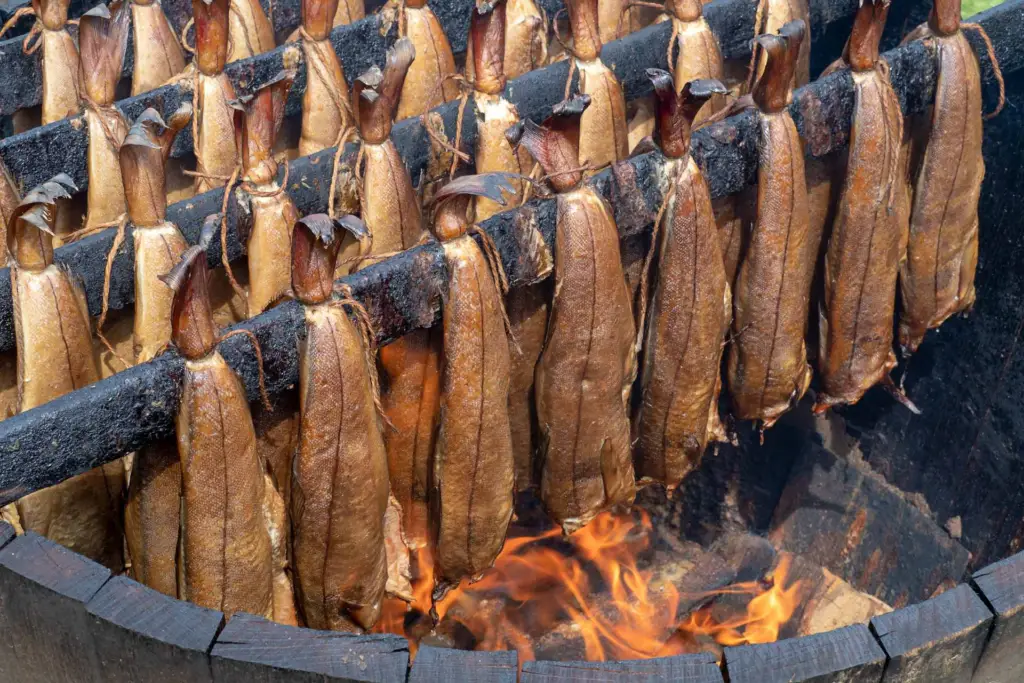
Canada’s culinary landscape boasts a dazzling array of flavors, but the magic goes beyond just the ingredients. Unique cooking methods, passed down through generations and influenced by both indigenous traditions and immigrant ingenuity, play a crucial role in defining Canadian cuisine.
Let’s delve deeper and explore some of these fascinating techniques.
Smoking: A Time-Tested Tradition
Smoking is an ancient technique used by indigenous peoples to preserve food. Salmon, a staple in coastal regions, is often cold-smoked, infusing it with a deep, smoky flavor and extending its shelf life.
This technique is also used for meats like caribou and wild boar, adding a distinctive layer of complexity. In Quebec, smoked meat (viande fumée) takes center stage, featuring thinly sliced smoked pork served with maple syrup and mustard.
Canning: Preserving Summer’s Bounty
Canada’s short growing seasons make preserving summer’s harvest essential. Canning, a technique introduced by Europeans, became a cornerstone of Canadian food culture. From juicy peaches and tart cherries to crisp pickles and tangy jams, countless fruits and vegetables are transformed into pantry staples through this method.
These canned goods not only ensure a steady supply of fresh flavors throughout the long winter but also evoke a sense of nostalgia and tradition.
Maple Sugaring: A Sweet Symphony
Maple syrup, a national treasure, is more than just a delicious topping. The process of maple sugaring is a unique technique rooted in indigenous practices and passed down through generations. In early spring, as the sap begins to flow in maple trees, it’s collected and boiled down in large sugar shacks.
This slow simmering process concentrates the sugars, creating the amber-colored syrup beloved by Canadians and the world.
Poutine Perfection: The Art of Cheese Curd Stretching
Poutine, the iconic Canadian dish of fries, gravy, and cheese curds, is more than just a combination of ingredients. The real magic lies in the cheese curds themselves. These fresh, squeaky curds are made by stretching curdled milk with hot water.
The unique stretching technique creates a cheese that melts beautifully over hot fries without becoming greasy, a crucial element in achieving poutine perfection.
Bannock: A Simple Yet Essential Flatbread
Bannock, a staple food in indigenous cuisine, is a simple flatbread made with flour, water, baking powder, and sometimes fat. Traditionally cooked over an open fire on a hot stone, bannock is a versatile food. It can be enjoyed plain, dipped in soups and stews, or even used as a base for savory or sweet toppings.
The simplicity of the ingredients and the ease of preparation make bannock a testament to resourcefulness and a reminder of Canada’s rich indigenous heritage.
These are just a few examples of the unique cooking techniques that contribute to the distinctive character of Canadian cuisine. From the smoky allure of preserved meats to the sweet symphony of maple sugaring, each method tells a story of tradition, resourcefulness, and a deep connection to the land. So, the next time you savor a Canadian dish, take a moment to appreciate the culinary artistry behind it – a true testament to the creativity and skill of Canadian cooks.
Traditional Canadian Food
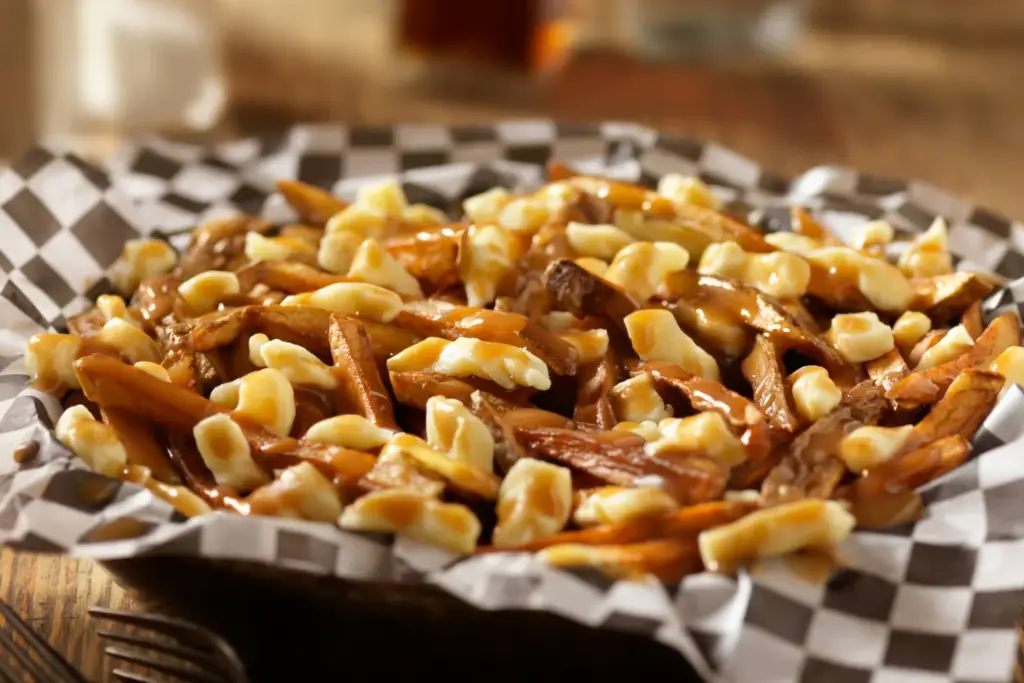
Canada’s vast landscape and rich history are reflected in its diverse and delectable cuisine. Move beyond the maple syrup stereotype and delve into the heart of Canadian food culture with these 5 iconic dishes, each a delicious journey through time and tradition.
Poutine: A National Treasure
Poutine – the very word evokes a symphony of textures and flavors. This seemingly simple dish of french fries, cheese curds, and gravy has become a national icon. The magic lies in the interplay of crispy fries, the rich, flavorful gravy, and the fresh, squeaky cheese curds.
Each region boasts its own variations, from smoked meat poutine in Quebec to variations featuring pulled pork or lobster in other areas. No matter the toppings, poutine is a guaranteed crowd-pleaser, a hearty and comforting dish that perfectly embodies Canadian comfort food.
Salmon en Papillote: A Seafood Delight
Hailing from the Atlantic provinces, salmon en papillote is a dish that celebrates the bounty of the sea. Fresh salmon is seasoned to perfection and then baked in a parchment paper envelope, allowing it to steam gently and retain its delicate flavors.
Vegetables like broccoli, carrots, and onions often join the party, and the whole dish is infused with the subtle aroma of fresh herbs. Unwrapping the papillote at the table is a delightful culinary ritual, revealing a steaming parcel of perfectly cooked seafood and colorful vegetables.
Tourtière: A Hearty French-Canadian Tradition
Tourtière, a savory meat pie, is a cornerstone of Quebec cuisine. A flaky pastry crust encases a flavorful filling traditionally made with ground pork, veal, or a combination of both. Onions, herbs, and warm spices add complexity to the savory filling.
Tourtière is a staple dish during the holiday season, gracing tables on Christmas Eve and New Year’s Day. However, this delicious pie is enjoyed year-round, a comforting and satisfying meal on a cold winter night.
Saskatoon Berry Pie: A Prairie Treat
The vast prairies of Canada offer a unique bounty, and Saskatoon berries are a cherished treasure. These small, sweet-tart berries take center stage in Saskatoon Berry Pie. A flaky crust cradles a filling bursting with the vibrant flavor of these native berries.
A touch of sugar and a hint of spice elevate the pie’s deliciousness. Saskatoon Berry Pie is a taste of the Prairies, a delightful dessert that showcases a unique Canadian ingredient.
Bannock: A Simple Bread with Rich History
Bannock, a flatbread made with flour, water, baking powder, and sometimes fat, is a significant element of indigenous cuisine. Simple to prepare and incredibly versatile, bannock can be enjoyed plain, dipped in soups and stews, or even used as a base for savory or sweet toppings.
Traditionally cooked over an open fire on a hot stone, bannock is a testament to resourcefulness and a reminder of the deep connection indigenous peoples have with the land. Enjoying a piece of bannock is a journey back in time, a connection to Canada’s rich indigenous heritage.
These five dishes are just a glimpse into the vast and delicious world of Canadian cuisine. Each bite tells a story, reflecting the diverse influences, rich history, and unique ingredients that define this culinary landscape. So, next time you have the opportunity, explore the culinary delights of Canada – your taste buds will thank you!
Exploring Canadian Street Food

When it comes to immersing yourself in the heart and soul of a country’s cuisine, few experiences rival the joy of indulging in street food. In Canada, a diverse and dynamic culinary scene spills onto the streets, offering a delicious tapestry of flavors from coast to coast.
Join us as we explore the vibrant Canadian street food scene, uncovering the iconic recipes that tempt taste buds and the cities that serve as epicenters of street food delight.
Poutine Passion in Montreal
Begin your street food journey in Montreal, a city that takes pride in its French-inspired culinary heritage. Here, poutine reigns supreme, a comforting and indulgent dish that has become a Canadian classic.
Picture this: golden, crispy fries drenched in savory gravy and topped with squeaky cheese curds. The marriage of textures and flavors in each bite is a testament to the genius of this street food staple. Montreal’s poutineries showcase creative variations, adding smoked meats, vegetables, or even foie gras to elevate this humble dish to new heights.
BeaverTails in Ottawa – A Sweet Sensation
Make your way to the capital city, Ottawa, and indulge your sweet tooth with a BeaverTail. Despite its curious name, a BeaverTail is a delightful pastry, stretched and fried until golden, then generously coated in cinnamon sugar or other sweet toppings.
This quintessentially Canadian treat offers a perfect balance of crispy exterior and pillowy softness inside, making it a must-try for anyone exploring the Canadian street food scene.
Smoked Meat Sandwiches in Toronto
Toronto’s bustling streets are home to a thriving street food culture, and one delicacy stands out—the Smoked Meat Sandwich. Influenced by the city’s multicultural identity, this sandwich features layers of flavorful smoked meat, mustard, and pickles, all nestled between slices of rye bread.
It’s a hearty and satisfying option that pays homage to Toronto’s diverse culinary influences and the city’s love affair with savory delights.
Japadog Fusion in Vancouver
Heading west to Vancouver, prepare your taste buds for a unique fusion experience with Japadog. This Japanese-inspired hot dog takes a traditional street food favorite and transforms it into a multicultural delight.
Imagine a hot dog topped with teriyaki sauce, seaweed, and Japanese mayo—Japadog seamlessly blends east and west to create a flavor explosion that captures the essence of Vancouver’s diverse food scene.
Butter Tarts in Niagara Falls
Finish your street food odyssey in the picturesque town of Niagara Falls, where you can savor the iconic Canadian Butter Tart. With its gooey, buttery filling encased in a flaky pastry shell, this sweet treat is a true Canadian indulgence.
The simplicity of the ingredients belies the complexity of flavors, making it a beloved choice for those with a sweet tooth.
Cities Alive with Street Food Energy
While every corner of Canada boasts its own unique street food gems, certain cities have emerged as hotspots for culinary exploration on the pavement. Toronto, Vancouver, Montreal, and Ottawa stand out as cities with thriving street food scenes.
From food truck festivals to bustling markets, these urban centers provide a diverse array of street eats, reflecting the multicultural mosaic that defines Canadian cuisine.
The Most Popular the Canadian Recipes

Canada’s culinary scene is a vibrant tapestry, woven from fresh ingredients, rich traditions, and global influences. Today, we embark on a mouthwatering adventure, exploring 10 iconic Canadian dishes that will tantalize your taste buds and transport you across this vast and delicious land.
Poutine: Quebec’s Comforting Masterpiece
Hailing from Quebec, poutine is more than just fries, cheese curds, and gravy – it’s a national treasure. Crispy french fries serve as the base for this delightful dish, while fresh, squeaky cheese curds add a delightful textural contrast.
Rich, flavorful gravy ties it all together, creating a symphony of flavors that’s guaranteed to satisfy.
Butter Tarts: A Gooey Slice of Canadian Heaven
No exploration of Canadian cuisine is complete without indulging in a butter tart. These sweet and gooey pastries boast a flaky crust filled with a decadent mixture of butter, brown sugar, and sometimes raisins or pecans. One bite of this classic dessert is pure bliss.
Tourtière: A Savory Holiday Tradition
Tourtière, a savory meat pie, is a cornerstone of Quebec cuisine. Imagine a flaky, golden crust encasing a flavorful filling traditionally made with ground pork, veal, or a delicious combination of both.
Warm spices like cloves and allspice add a touch of complexity, making this dish a true comfort food masterpiece. Tourtière is particularly popular during the holiday season, gracing tables on Christmas Eve and New Year’s Day.
Nanaimo Bars: A No-Bake Treat from British Columbia
Nanaimo bars are a delightful no-bake dessert that hails from British Columbia. These decadent squares feature three layers of pure bliss: a crumbly graham cracker base, a creamy custard-flavored middle, and a rich, glossy chocolate topping.
They’re perfect for satisfying your sweet tooth without the hassle of baking.
BeaverTails: Indulge Your Inner Canadian
Craving a sweet and indulgent treat? Look no further than beavertails! These deep-fried pastries are shaped like a beaver’s tail (hence the name!) and come smothered in a variety of delicious toppings.
Cinnamon sugar is a classic, but don’t be afraid to explore other options like Nutella, whipped cream, or even savory choices like cheese and bacon. Beavertails are a popular street food found across Canada, perfect for a sweet snack on the go.
Bannock: A Simple Bread Steeped in History
Bannock is a simple flatbread made with flour, baking powder, and water, often cooked over an open fire. This versatile bread is a staple in indigenous cuisine and a testament to resourcefulness. Enjoy it plain, dip it in soups and stews, or use it as a base for savory or sweet toppings.
Taking a bite of bannock is a journey back in time, a connection to Canada’s rich indigenous heritage.
Peameal Bacon Sandwich: A Toronto Tradition
Toronto’s iconic peameal bacon sandwich is a breakfast (or anytime!) treat. Peameal bacon, made from back bacon cured in a special peameal brine, is the star of the show.
Sandwiched between a fluffy bun and often served with a dollop of mustard, this simple dish is a delicious representation of Toronto’s street food scene.
Salmon Candy: A Sweet and Savory Delicacy
From the Pacific Northwest comes salmon candy, a unique and delightful treat. Salmon fillets are cured with a mixture of sugar, salt, and spices, then smoked to perfection. The result is a sweet and savory delicacy that perfectly showcases the bounty of the sea.
Jiggs’ Dinner: A Hearty Newfoundland Staple
Jiggs’ dinner is a Newfoundland comfort food that will warm you from the inside out. This hearty dish features salted beef or corned beef, a medley of boiled vegetables like potatoes, cabbage, and turnips, and a side of pease pudding.
It’s a traditional and satisfying meal that perfectly embodies Newfoundland cuisine.
Maple Syrup Pie: A Canadian Icon on a Plate
Canada’s love affair with maple syrup extends beyond pancakes. Maple syrup pie is a decadent dessert that celebrates this iconic ingredient. A flaky pie crust encases a rich filling made with maple syrup, butter, eggs, and cream.
This sweet indulgence is a true taste of Canada and a perfect way to end a delicious meal.
What are the Health Implications of Canadian Cuisine?

Canadian cuisine, with its diverse and regional influences, offers a range of dishes that contribute to the nation’s culinary identity. However, it’s essential to explore the health implications associated with these food choices.
One aspect to consider is the emphasis on locally sourced and seasonal ingredients in many Canadian recipes. This often results in fresher produce, supporting a diet rich in vitamins, minerals, and antioxidants. The abundance of seafood, particularly in coastal regions, introduces omega-3 fatty acids, promoting heart health.
On the other hand, some traditional Canadian dishes may pose challenges to a health-conscious diet. Classics like poutine, a dish featuring fries, cheese curds, and gravy, can be high in calories, unhealthy fats, and sodium, potentially contributing to weight-related and cardiovascular issues.
National Health Trends:
From 2015 to 2021, the prevalence of high blood pressure, heart disease, and obesity increased.
Fewer Canadians met physical activity guidelines and consumed enough fruits and vegetables
Understanding the health implications of Canadian cuisine involves finding a balance between embracing nutrient-dense options and indulging in iconic treats. By incorporating a variety of fresh, whole foods and being mindful of portion sizes, individuals can savor the flavors of Canadian cuisine while maintaining a health-conscious approach to their diet.
References
- Health Reports – Statistics Canada
- Impacts of Colonization on Indigenous Food Systems
- A Glimpse at the Health of Canadians
Canada’s National Dish
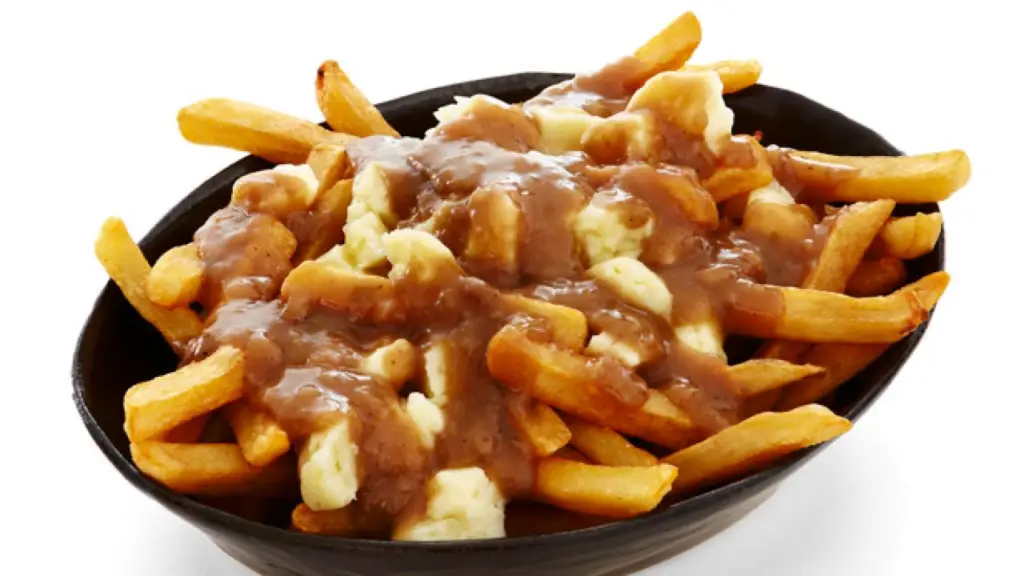
Few dishes ignite debate quite like poutine. This seemingly simple concoction of french fries, cheese curds, and gravy has transcended its Quebec roots to become a national symbol – or so some claim.
Poutine’s journey from humble beginnings to iconic status is a fascinating story, filled with regional pride, cultural appropriation debates, and of course, an undeniable indulgence factor.
A Delicious Rebellion: Birth of a Legend
The exact origin of poutine remains shrouded in mystery, with various creation stories adding to its mystique. Some claim it emerged in the 1950s in Quebec’s rural areas, where cheese curds were readily available and fries were a popular snack.
Restaurants began offering them together, eventually drenching the combination in gravy, creating the poutine we know and love (or love to hate?). Another tale credits a Quebec restaurant owner with accidentally spilling gravy on a customer’s fries and cheese curds, resulting in a surprisingly delicious creation.
From Local Favorite to National Star
Poutine’s popularity initially remained confined to Quebec, cherished as a regional comfort food. However, in the late 20th century, it began its ascent to national fame. Fast-food chains and restaurants across
Canada started including poutine on their menus, introducing it to a wider audience. Its unique combination of textures – the crispy fries, the squeaky cheese curds, and the rich gravy – along with its undeniable tastiness, captured hearts (and stomachs) across the country.
The National Dish Debate: A Sticky Situation
Poutine’s national dish status is a contentious issue. While widely recognized as a Canadian icon, some argue that labeling it the “national dish” disrespects the rich culinary diversity of Canada.
Others, particularly those in Quebec, believe it undermines the dish’s unique connection to their province’s identity.
Beyond the Controversy: A Celebration of Flavor
Regardless of the debate, poutine’s deliciousness is undeniable. It’s a dish that embodies Canadian comfort food – hearty, satisfying, and perfect for any occasion. From classic versions to creative variations featuring pulled pork, lobster, or even foie gras, poutine offers endless possibilities for exploration.
So, is poutine Canada’s national dish? The answer depends on who you ask. But one thing is certain: poutine is a delicious and iconic part of Canadian cuisine, a testament to culinary ingenuity and a guaranteed crowd-pleaser. So, the next time you’re craving a taste of Canada, grab a fork and dive into a plate of this legendary dish – just be prepared to weigh in on the national poutine debate!
Great Recipes to Try at Home
Craving a taste of Canada without the hassle of booking a flight? Look no further! This chapter is your culinary passport to exploring the rich and diverse flavors of Canadian cuisine, all from the comfort of your own kitchen.
From the iconic poutine to the sweet decadence of butter tarts, we’ll guide you through a selection of mouthwatering Canadian recipes. We’ll delve into the unique ingredients and cooking techniques that define Canadian food, ensuring you recreate these dishes authentically.
Whether you’re a seasoned cook or just starting your culinary adventures, this guide is designed for everyone. With step-by-step instructions, easy-to-find ingredients, and helpful tips, you’ll be whipping up impressive Canadian feasts in no time. So, grab your apron, fire up the stove, and get ready to embark on a delicious journey across Canada, one dish at a time!
Canadian Cuisine – Poutine

Poutine is a beloved Canadian dish that originated in Quebec. This indulgent starter consists of crispy French fries smothered in rich gravy and topped with cheese curds. The combination of flavors and textures creates a delightful experience for your taste buds.
Poutine Ingredients
- 2 large potatoes, cut into fries
- 1 cup cheese curds
- 2 cups beef or chicken gravy
- Salt to taste
Poutine Recipe
- Fry the potatoes until golden brown and crispy.
- Place the fries on a serving dish and sprinkle salt over them.
- Pour the hot gravy over the fries, making sure they are well coated.
- Top with cheese curds and let them melt slightly.
- Serve immediately and enjoy the cheesy, savory goodness!
Canadian Cuisine – Grilled Salmon and Vegetable Skewers

Grilled salmon is a nod to Canada’s abundant coastlines, especially the Pacific coast, which is renowned for its high-quality salmon. While skewers might not be originally Canadian, incorporating salmon and local vegetables showcases Canada’s rich natural resources and the influence of modern, globally inspired methods on traditional ingredients.
History and Background
Canada boasts some of the world’s most pristine waters, making its seafood, particularly salmon, a sought-after delicacy. The Indigenous peoples have been fishing these waters for millennia, perfecting the art of preparing and cooking fish.
Grilling is a method that pays homage to the traditional ways of cooking over open flames, while skewering is a modern approach, making it easier to enjoy at gatherings and barbecues. Pairing salmon with fresh local vegetables not only adds vibrant flavors but also showcases the country’s rich agricultural offerings.
Canadian Cuisine – Grilled Salmon and Vegetable Skewers Ingredients
- 500 grams (1 lb) fresh salmon fillets, cut into 1-inch cubes
- 2 bell peppers (red and yellow), cut into 1-inch pieces
- 1 zucchini, sliced into thick rounds
- 1 red onion, cut into wedges
- 2 tablespoons olive oil
- 2 cloves garlic, minced
- 1 tablespoon maple syrup
- 1 tablespoon Dijon mustard
- 1 tablespoon freshly squeezed lemon juice
- Salt and pepper, to taste
- Fresh dill or parsley for garnish (optional)
- Wooden skewers, soaked in water for at least 30 minutes
Grilled Salmon and Vegetable Skewers Recipe
Marinade Preparation
In a mixing bowl, whisk together olive oil, minced garlic, maple syrup, Dijon mustard, lemon juice, salt, and pepper. This mixture will serve as a marinade.
Prepare the Fish
- Place the salmon cubes in the marinade, ensuring each piece is well coated. Allow it to marinate for at least 30 minutes in the refrigerator.
- Preheat the grill to medium-high heat.
- Thread the salmon cubes, bell peppers, zucchini, and red onion alternately onto the soaked wooden skewers.
- Place the skewers on the grill and cook for about 3-4 minutes on each side or until the salmon is opaque and vegetables have a slight char.
- Remove from the grill and let them rest for a couple of minutes.
- Optionally, drizzle with a bit more maple syrup or sprinkle with fresh dill or parsley for garnish.
- Serve immediately with a side of lemon wedges.
Enjoy this delicious and colorful appetizer that brings out the best of Canadian ingredients with a modern twist!
Canadian Cuisine – Maple-Glazed Salmon
:max_bytes(150000):strip_icc()/Maple-Glazed-Salmon-2x1-1-2000-df6da651d58a43888282b3d6de9c1acd.jpg)
Maple syrup is an iconic Canadian ingredient, and it adds a delightful sweetness to this succulent salmon dish. This main course is perfect for seafood lovers and showcases the natural flavors of Canada.
Canadian Cuisine – Maple-Glazed Salmon Ingredients
- 4 salmon fillets
- ½ cup maple syrup
- 2 tablespoons soy sauce
- 2 tablespoons Dijon mustard
- 2 cloves garlic, minced
- Salt and pepper to taste
Maple-Glazed Salmon Recipe
- In a small bowl, whisk together the maple syrup, soy sauce, Dijon mustard, garlic, salt, and pepper.
- Place the salmon fillets in a baking dish and pour the maple glaze over them, ensuring they are well coated.
- Marinate the salmon in the refrigerator for at least 30 minutes.
- Preheat the oven to 400°F (200°C) and bake the salmon for 12-15 minutes or until cooked through.
- Serve with your choice of sides and enjoy the sweet and savory flavors!
Canadian Cuisine – Tourtière
Tourtière is a traditional French-Canadian meat pie that is often enjoyed during the holiday season. This comforting main course features a flaky pastry crust filled with a savory mixture of ground pork, beef, and aromatic spices.
Canadian Cuisine – Tourtière Ingredients
- 1 pound ground pork
- 1 pound ground beef
- 1 onion, finely chopped
- 2 cloves garlic, minced
- 1 teaspoon dried thyme
- ½ teaspoon ground cinnamon
- ½ teaspoon ground cloves
- ½ teaspoon ground nutmeg
- Salt and pepper to taste
- 2 cups beef or vegetable broth
- 2 pie crusts
Tourtière Recipe
- In a large skillet, cook the ground pork and beef over medium heat until browned. Drain any excess fat.
- Add the chopped onion, minced garlic, thyme, cinnamon, cloves, nutmeg, salt, and pepper to the skillet. Cook until the onion is softened.
- Pour in the beef or vegetable broth and simmer for 20-30 minutes, stirring occasionally, until the mixture thickens.
- Preheat the oven to 400°F (200°C).
- Line a pie dish with one of the pie crusts. Pour the meat mixture into the crust.
- Cover the filling with the second pie crust and seal the edges. Cut slits in the top crust to allow steam to escape.
- Bake for 35-40 minutes or until the crust is golden brown.
- Allow the tourtière to cool slightly before serving.
Canadian Cuisine – Nanaimo Bars

Nanaimo Bars are a quintessentially Canadian dessert that originated in Nanaimo, British Columbia. These no-bake bars feature a buttery chocolate base, a creamy custard filling, and a rich chocolate ganache topping.
Canadian Cuisine – Nanaimo Bars Ingredients
- ½ cup unsalted butter, melted
- ¼ cup granulated sugar
- 5 tablespoons cocoa powder
- 1 egg, beaten
- 1 ¾ cups graham cracker crumbs
- 1 cup shredded coconut
- ½ cup chopped walnuts or pecans
- ½ cup unsalted butter, softened
- 2 tablespoons vanilla custard powder
- 2 cups powdered sugar
- 2 tablespoons milk
- 4 ounces semi-sweet chocolate, chopped
- 2 tablespoons unsalted butter
Nanaimo Bars Recipe
- In a medium bowl, combine the melted butter, granulated sugar, cocoa powder, beaten egg, graham cracker crumbs, coconut, and chopped nuts. Press the mixture into the bottom of a greased baking dish.
- In a separate bowl, beat together the softened butter, custard powder, powdered sugar, and milk until smooth. Spread the custard mixture over the chocolate base.
- In a microwave-safe bowl, melt the semi-sweet chocolate and 2 tablespoons of butter in 30-second intervals, stirring until smooth. Pour the chocolate ganache over the custard layer.
- Refrigerate for at least 2 hours or until set. Cut into squares and serve.
Canadian Cuisine – BeaverTails
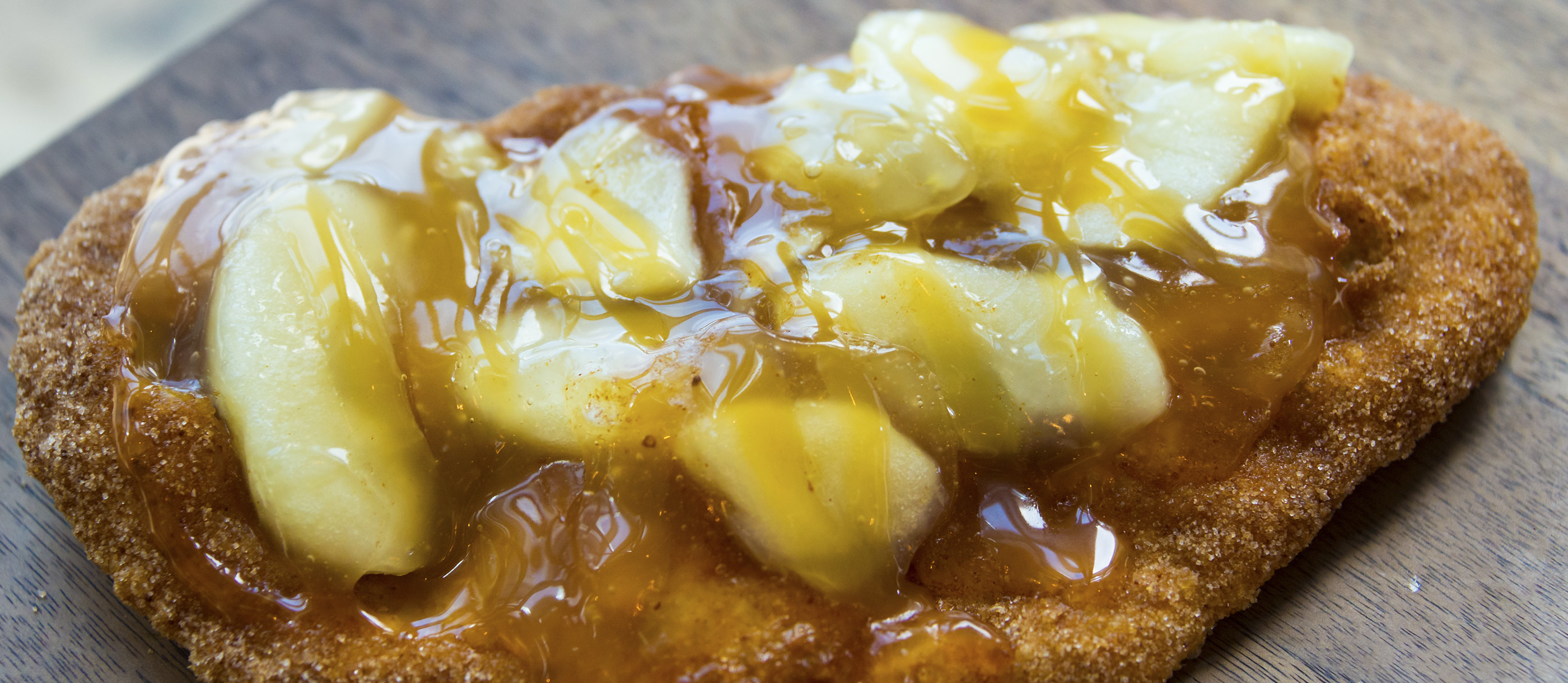
BeaverTails are a Canadian treat that resembles a flat pastry shaped like a beaver’s tail. These sweet pastries are often topped with a variety of delicious toppings, making them a popular choice for dessert.
Canadian Cuisine – BeaverTails Ingredients
- 2 ½ cups all-purpose flour
- 2 tablespoons granulated sugar
- 1 package active dry yeast
- 1 teaspoon salt
- 1 cup warm water
- Vegetable oil for frying
- Toppings of your choice (e.g., cinnamon sugar, Nutella, maple syrup, etc.)
BeaverTails Recipe
- In a large mixing bowl, combine the flour, sugar, yeast, and salt. Gradually add the warm water and mix until a soft dough forms.
- Knead the dough on a lightly floured surface for about 5 minutes or until smooth and elastic.
- Place the dough in a greased bowl, cover with a clean kitchen towel, and let it rise in a warm place for 1 hour or until doubled in size.
- Heat vegetable oil in a deep fryer or large pot to 375°F (190°C).
- Divide the dough into 6 equal portions. Stretch each portion into an oval shape, resembling a beaver’s tail.
- Carefully place the dough into the hot oil and fry for about 2 minutes on each side or until golden brown.
- Remove the BeaverTails from the oil and drain on a paper towel.
- Top with your favorite toppings and enjoy these delicious Canadian pastries!
These Canadian national food dishes not only satisfy your taste buds but also offer a glimpse into the country’s culinary history. Whether you’re enjoying poutine, tourtière, or Nanaimo Bars, each dish tells a story and reflects the diverse cultural influences that have shaped Canadian cuisine.
Canadian Cuisine – Butter Tarts

Butter tarts are a classic Canadian dessert that can also be enjoyed as a starter. These sweet treats consist of a flaky pastry shell filled with a gooey mixture of butter, sugar, and eggs. They are a true Canadian delicacy.
Canadian Cuisine – Butter Tarts Ingredients
- 1 ½ cups all-purpose flour
- ½ cup unsalted butter, cold and cubed
- ¼ cup cold water
- 1 cup brown sugar
- ½ cup corn syrup
- 2 eggs
- 1 teaspoon vanilla extract
- Pinch of salt
Butter Tarts Recipe
- In a mixing bowl, combine the flour and salt. Cut in the butter until the mixture resembles coarse crumbs.
- Add the cold water gradually, mixing until the dough comes together.
- Roll out the dough and cut into circles to fit a muffin tin.
- In a separate bowl, whisk together the brown sugar, corn syrup, eggs, and vanilla extract.
- Fill each pastry shell with the sugar mixture, about ¾ full.
- Bake at 375°F (190°C) for 15-20 minutes or until the filling is set and the pastry is golden.
- Allow the tarts to cool before serving.
Canadian Food – Nova Scotian Lobster Rolls
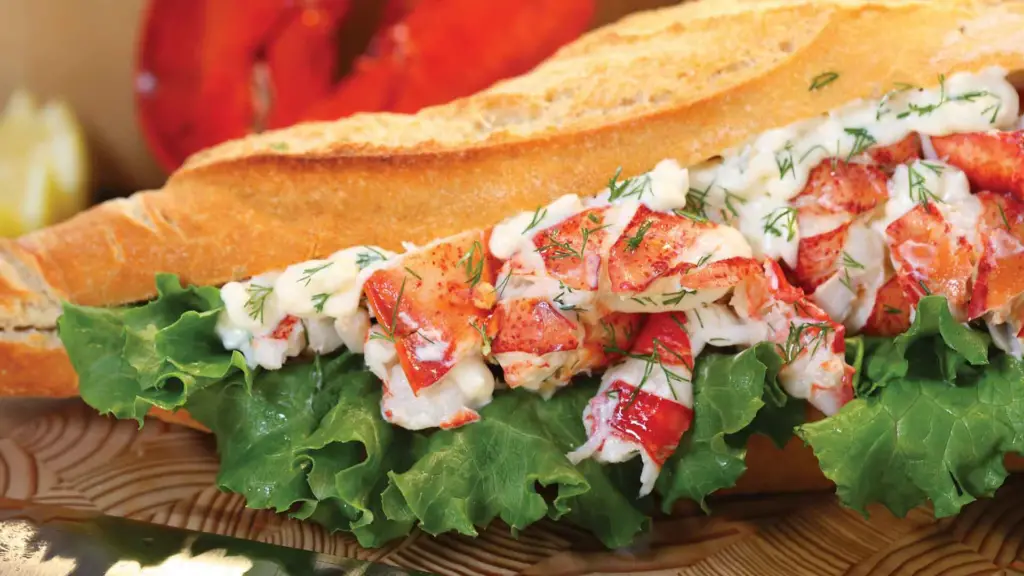
History and Background: Nova Scotian Lobster Rolls are a delicious maritime dish hailing from the coastal region of Nova Scotia, Canada. Lobster fishing has been a vital part of Nova Scotia’s economy and culinary heritage for centuries.
Canadian Food – Nova Scotian Lobster Rolls Ingredients:
- Fresh lobster meat
- High-quality hot dog buns
- Mayonnaise
- Chopped celery
- Chopped fresh chives
- Lemon juice
- Salt and pepper to taste
- Melted butter for brushing
Canadian Food – Nova Scotian Lobster Rolls Recipe:
Servings: 4
Cooking Time: 30 minutes
Calories: Approximately 350 calories per serving
Prepare the Lobster Meat
- Steam or boil the lobster until cooked.
- Remove the lobster meat from the shells and chop it into bite-sized pieces.
Mix the Lobster Filling
- In a bowl, combine lobster meat, mayonnaise, celery, chives, lemon juice, salt, and pepper.
- Mix gently until well combined.
Toast the Buns
- Brush the hot dog buns with melted butter.
- Toast them on a hot griddle or skillet until golden brown.
Assemble the Rolls
- Fill each toasted bun with the prepared lobster mixture.
- Garnish with additional chives if desired.
Serve Plate the Nova Scotian Lobster Rolls and serve immediately, capturing the essence of Nova Scotia’s coastal flavors. Enjoy this maritime delight!
Canadian Food – Saskatoon berry pie

History and Background: Saskatoon Berry Pie is a cherished Canadian dessert, rooted in Indigenous traditions and embraced across the country. Saskatoon berries, native to Canada, have been a staple in Indigenous cuisine for centuries, and the pie showcases the deep connection between culture and culinary heritage.
Canadian Food – Saskatoon berry pie Ingredients:
- 4 cups fresh or frozen Saskatoon berries
- 1 cup granulated sugar
- 1/4 cup all-purpose flour
- 1 tablespoon lemon juice
- 1/2 teaspoon vanilla extract
- 2 tablespoons unsalted butter
- 2 pre-made pie crusts (for a double-crust pie)
Canadian Food – Saskatoon berry pie Recipe:
Servings: 8
Cooking Time: 50 minutes (plus cooling time)
Calories: Approximately 350 calories per serving
Prepare the Berries
- Rinse Saskatoon berries and remove any stems.
- In a bowl, mix berries, sugar, flour, lemon juice, and vanilla. Let it sit for 15 minutes.
Preheat Oven Preheat the oven to 425°F (220°C).
Line the Pie Pan Line a pie pan with one pie crust.
Add Berry Mixture Pour the Saskatoon berry mixture into the pie crust.
Dot with Butter Dot the berry mixture with small pieces of butter.
Cover with Second Crust Place the second pie crust over the berries, sealing the edges. Cut slits for venting.
Bake in the preheated oven for 10 minutes, then reduce the heat to 350°F (175°C) and bake for an additional 35–40 minutes, or until the crust is golden and the filling is bubbly.
Cool and Serve Allow the pie to cool before serving. Serve slices of Saskatoon Berry Pie, capturing the rich flavors of Canada’s northern landscapes. Enjoy!
Note: Cooking times may vary, so monitor the pie while baking.
Canadian Food – Peameal Bacon

History and Background: Peameal Bacon, also known as Canadian bacon, holds a special place in Canadian cuisine. Originating in Toronto in the early 20th century, this pork loin is rolled in cornmeal, creating a distinctive crust.
Loved for its lean and tender profile, Peameal Bacon is a breakfast classic and a symbol of Canadian culinary identity.
Canadian Food – Peameal Bacon Ingredients:
- 1 pound peameal bacon
- 1 cup cornmeal
- 1 tablespoon vegetable oil
- Salt and pepper to taste
Canadian Food – Peameal Bacon Recipe:
Servings: 4
Cooking Time: 15 minutes
Calories: Approximately 200 calories per serving
Prep the Bacon
- Cut peameal bacon into 1/2-inch thick slices.
- Place cornmeal in a shallow dish.
Coat the Bacon Coat each bacon slice thoroughly in cornmeal, pressing gently to adhere.
Heat the Oil In a skillet over medium heat, add vegetable oil.
Cook the Bacon Place bacon slices in the skillet and cook for about 3-4 minutes per side, or until golden brown and crispy.
Season with salt and pepper to taste while cooking.
Drain and Serve Place cooked Peameal Bacon on a paper towel to drain excess oil.
Serve Hot Serve hot as part of a classic Canadian breakfast or in a sandwich. Enjoy the crispy exterior and succulent interior of this iconic Canadian dish!
Note: Cooking times may vary, so adjust accordingly to achieve desired crispiness.
Canadian Food – Tire d’érable sur la neige (Maple Taffy)

History and Background: Tire d’érable sur la neige, or Maple Taffy, is a sweet treat deeply rooted in Canadian tradition, especially during the sugaring-off season.
Originating from Quebec, this delightful dessert involves pouring hot maple syrup onto snow, creating a chewy and maple-infused taffy.
This practice showcases Canada’s rich maple syrup industry and the cultural significance of sugaring-off festivities.
Canadian Food – Tire d’érable sur la neige Ingredients:
- 1 cup pure maple syrup
- Fresh, clean snow
Canadian Food – Tire d’érable sur la neige Recipe:
Servings: Varies
Cooking Time: 15 minutes
Calories: Approximately 50 calories per serving
Collect Fresh Snow Collect a clean layer of fresh snow in a shallow, clean container.
Boil Maple Syrup
- In a saucepan, heat the maple syrup over medium-high heat.
- Bring it to a boil, stirring occasionally.
Check Temperature Use a candy thermometer to monitor the syrup’s temperature. It should reach around 235°F (113°C), or the soft-ball stage.
Pour Over Snow Once the syrup reaches the desired temperature, immediately pour it in thin lines or pools over the clean snow.
Allow to Set Let the taffy cool and partially set on the snow for a few seconds.
Roll It Up Using a clean popsicle stick or fork, roll up the semi-set taffy onto the stick.
Enjoy Eat and savor this classic Canadian treat immediately. The cold snow gives the hot syrup a delightful chewy texture.
Note: Be cautious when working with hot syrup and ensure that the snow used is clean and uncontaminated.
Canadian Food – Montreal-style Bagels
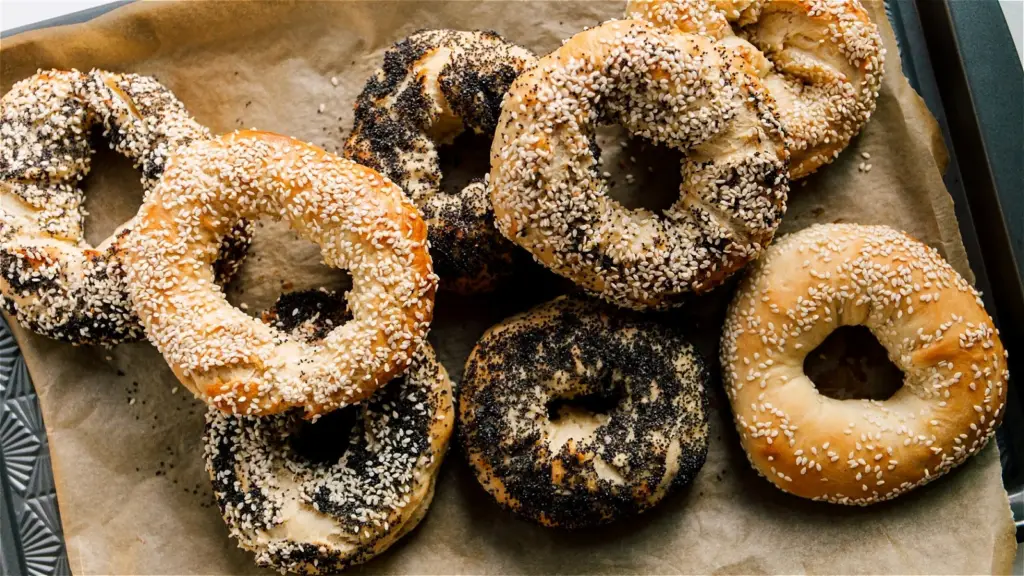
History and Background: Montreal-style bagels trace their roots to Jewish immigrants who settled in Montreal, Canada, in the early 20th century. These bagels are distinct from their New York counterparts, featuring a smaller size, denser texture, and a unique sweet and slightly savory flavor.
Montreal-style bagels have become a culinary icon, reflecting the city’s rich cultural diversity and culinary traditions.
Canadian Food – Montreal-style Bagels Ingredients:
- 1 1/4 cups warm water
- 1 tablespoon active dry yeast
- 3 tablespoons sugar
- 3 1/2 cups bread flour
- 1 1/2 teaspoons salt
- 1 egg (for egg wash)
- Sesame or poppy seeds (optional, for topping)
Canadian Food – Montreal-style Bagels Recipe:
Servings: Makes about 12 bagels
Preparation Time: 2 hours (plus overnight refrigeration)
Cooking Time: 15-20 minutes per batch
Calories: Approximately 200 calories per bagel
Activate the Yeast
- In a bowl, combine warm water, sugar, and active dry yeast. Allow it to sit for 5-10 minutes until it becomes frothy.
Mix Dry Ingredients
- In a large mixing bowl, combine bread flour and salt.
- Gradually add the yeast mixture and knead until a smooth, elastic dough forms.
Rest and Rise
- Cover the dough and let it rise in a warm place for about 1 hour or until it has doubled in size.
- Punch down the dough and let it rest in the refrigerator overnight.
Shape the Bagels
- Preheat the oven to 425°F (220°C).
- Divide the dough into 12 equal portions and shape each into a smooth ball.
- Punch a hole in the center of each ball and stretch it into a ring.
Boil the Bagels
- Bring a large pot of water to a boil.
- Boil each bagel for 30 seconds on each side.
Egg Wash and Toppings
- Beat the egg and brush it over the boiled bagels.
- Optionally, sprinkle sesame or poppy seeds on top.
Bake the bagels on a lined baking sheet for 15-20 minutes or until golden brown.
Cool and Enjoy Allow the Montreal-style bagels to cool before slicing and serving. Enjoy with your favorite spreads or as a sandwich base.
Canadian Food – Great Lakes Perch

History and Background: Great Lakes Perch is a dish rooted in the culinary traditions of the Great Lakes region in Canada. This freshwater fish, known for its delicate flavor and tender texture, is a popular catch among anglers and a staple in local cuisine.
The dish reflects the region’s rich aquatic resources and the importance of sustainable fishing practices.
Canadian Food – Great Lakes Perch Ingredients:
- 1 lb Great Lakes perch fillets
- 1 cup all-purpose flour
- 2 eggs
- 1 cup breadcrumbs
- 1/2 cup cornmeal
- Salt and pepper to taste
- Vegetable oil for frying
- Lemon wedges for serving
- Tartar sauce for dipping
Canadian Food – Great Lakes Perch Recipe:
Servings: 4
Preparation Time: 15 minutes
Cooking Time: 10 minutes
Calories: Approximately 300 calories per serving
Prepare the Perch Fillets
- Rinse the perch fillets under cold water and pat them dry with paper towels.
- Season the fillets with salt and pepper to taste.
Set Up Breading Station
- In separate shallow bowls, place flour, beaten eggs, and a mixture of breadcrumbs and cornmeal.
Bread the Perch
- Dredge each perch fillet in flour, ensuring an even coating.
- Dip the floured fillets into the beaten eggs.
- Coat the fillets with the breadcrumb-cornmeal mixture, pressing gently to adhere.
Fry the Perch
- In a large skillet, heat vegetable oil over medium-high heat.
- Fry the breaded perch fillets for 3-4 minutes on each side or until golden brown.
- Place the fried fillets on a paper towel-lined plate to absorb excess oil.
Serve the Great Lakes Perch hot, garnished with lemon wedges, and accompanied by tartar sauce for dipping.
Enjoy this crispy and flavorful dish as a main course with your favorite sides or in a sandwich for a classic Canadian dining experience.
Canadian Food – Split Pea Soup

History and Background: Split Pea Soup is a classic Canadian comfort dish with roots in French-Canadian cuisine. It has a history dating back to the early settlers who utilized simple, hearty ingredients.
Over time, this soup became a staple, loved for its warmth and nourishing qualities, especially during the cold Canadian winters.
Canadian Food – Split Pea Soup Ingredients:
- 1 1/2 cups dried green split peas
- 8 cups chicken or vegetable broth
- 1 ham hock or ham bone
- 1 onion, finely chopped
- 2 carrots, diced
- 2 celery stalks, chopped
- 2 cloves garlic, minced
- 1 bay leaf
- Salt and pepper to taste
- 2 tablespoons olive oil (optional)
- Chopped fresh parsley for garnish
Canadian Food – Split Pea Soup Recipe:
Servings: 6-8
Preparation Time: 10 minutes
Cooking Time: 1 hour 30 minutes
Calories: Approximately 250 calories per serving
Prepare Ingredients
- Rinse the split peas thoroughly and set aside.
- Chop the onion, carrots, celery, and garlic.
Sauté Aromatics (Optional)
- In a large pot, heat olive oil over medium heat.
- Sauté the onion, carrots, celery, and garlic until softened.
Cook Split Peas
- Add split peas, broth, ham hock or bone, bay leaf, salt, and pepper to the pot.
- Bring to a boil, then reduce heat to low and simmer, covered, for about 1 hour or until peas are tender.
Remove Ham Hock/Bone
- Take out the ham hock or bone and shred any meat. Discard bones and return the meat to the pot.
Adjust Seasoning
- Taste and adjust seasoning as needed.
Serve
- Ladle the soup into bowls, garnish with chopped parsley, and serve hot.
Enjoy Savor the heartiness of this traditional Canadian Split Pea Soup, perfect for warming up on chilly days. Serve with crusty bread for a complete meal.
Canadian Food – Pouding Chômeur

History and Background: Pouding chômeur, or Pudding Chomeur, is a classic French-Canadian dessert that originated during the Great Depression. Translating to “unemployed person’s pudding,” it reflects the economic hardships of the time.
The dessert is a comforting and simple treat, consisting of a cake-like batter and a rich maple syrup sauce.
Canadian Food – Pouding Chômeur Ingredients:
- 1 cup all-purpose flour
- 1 teaspoon baking powder
- 1/2 teaspoon salt
- 1/2 cup unsalted butter, softened
- 1 cup granulated sugar
- 2 large eggs
- 1 teaspoon vanilla extract
- 1/2 cup whole milk
Maple Syrup Sauce:
- 1 cup pure maple syrup
- 1 cup brown sugar
- 1 cup water
- 1/4 cup unsalted butter
Canadian Food – Pouding Chômeur Recipe:
Servings: 6-8
Preparation Time: 15 minutes
Cooking Time: 40 minutes
Calories: Approximately 400 calories per serving
Preheat Oven
- Preheat the oven to 350°F (175°C).
Prepare Batter
- In a bowl, whisk together flour, baking powder, and salt.
- In another bowl, cream together softened butter and sugar until light and fluffy.
- Beat in eggs one at a time, then add vanilla extract.
- Gradually add the dry ingredients, alternating with milk, until a smooth batter forms.
Make Maple Syrup Sauce
- In a saucepan, combine maple syrup, brown sugar, water, and butter.
- Bring the mixture to a boil, then reduce heat and simmer for 5 minutes.
Assemble and Bake
- Pour the batter into a greased baking dish.
- Pour the maple syrup sauce over the batter.
- Bake in the preheated oven for about 40 minutes or until the top is golden and a toothpick comes out clean.
Serve Warm
- Allow the pudding to cool slightly before serving.
- Serve warm, spooning the extra maple syrup sauce over each portion.
Enjoy Indulge in the decadence of Pouding Chômeur, a delightful Canadian dessert that brings a taste of history and comfort to your table.
Canadian Food – Steamies

History and Background: Steamies, a classic Canadian dish, trace their roots to Montreal. These steamed hot dogs are an iconic street food, offering a unique twist to the traditional hot dog experience.
Originating from Montreal’s vibrant food scene, Steamies have become a beloved and distinctive culinary delight.
Canadian Food – Steamies Ingredients:
- 8 high-quality beef or pork hot dog sausages
- 8 soft hot dog buns
- 1 cup finely chopped white onions
- 1 cup prepared yellow mustard
- 1/2 cup sweet relish
- 1/4 cup chopped pickles
- 8 dill pickle spears (for serving)
Canadian Food – Steamies Recipe:
Servings: 8
Preparation Time: 10 minutes
Cooking Time: 15 minutes
Calories: Approximately 300 calories per serving
Steam the Hot Dogs Ingredients:
- 8 hot dog sausages
- Steamer or pot with a steaming basket
- Fill the steamer or pot with water, ensuring it doesn’t touch the steaming basket.
- Place hot dog sausages in the steaming basket.
- Steam the sausages for about 10-15 minutes until heated through.
Prepare the Toppings Ingredients:
- 1 cup finely chopped white onions
- 1 cup prepared yellow mustard
- 1/2 cup sweet relish
- 1/4 cup chopped pickles
- Combine chopped onions, yellow mustard, sweet relish, and chopped pickles in separate bowls.
Assemble Steamies Ingredients:
- 8 steamed hot dog sausages
- 8 soft hot dog buns
- Prepared toppings
- Place each steamed sausage into a soft hot dog bun.
- Add desired amounts of chopped onions, mustard, relish, and chopped pickles on top.
Serve and Enjoy
- Arrange Steamies on a platter.
- Serve with dill pickle spears on the side.
- Enjoy these flavorful Montreal-style steamed hot dogs with friends and family!
Note Feel free to customize your Steamies with additional toppings like sauerkraut or grated cheese for a personal touch.
Canadian Food – Hodge Podge

History and Background: Hodge Podge is a cherished Canadian dish with roots in Maritime provinces, particularly Nova Scotia. This comforting and hearty stew reflects the region’s agricultural abundance. Traditionally prepared in late summer with fresh, seasonal vegetables, Hodge Podge showcases the agricultural richness of the area.
Canadian Food – Hodge Podge Ingredients:
- 4 cups fresh green beans, ends trimmed and halved
- 4 cups baby potatoes, halved or quartered
- 2 cups fresh garden peas, shelled
- 2 cups baby carrots, peeled and halved
- 1 cup yellow beans, ends trimmed and halved
- 1 cup whipping cream
- 1/2 cup unsalted butter
- Salt and pepper to taste
Optional Ingredients:
- Cooked ham or bacon for added flavor
Canadian Food – Hodge Podge Recipe:
Servings: 6-8
Preparation Time: 15 minutes
Cooking Time: 20-25 minutes
Calories: Approximately 300 calories per serving
Prepare Vegetables Ingredients:
- 4 cups fresh green beans
- 4 cups baby potatoes
- 2 cups fresh garden peas
- 2 cups baby carrots
- 1 cup yellow beans
- Wash and trim vegetables as needed.
- Cut potatoes, green beans, yellow beans, and carrots into bite-sized pieces.
Cook Vegetables Ingredients:
- Prepared vegetables
- Water
- Salt
- In a large pot, bring salted water to a boil.
- Add potatoes and carrots; cook for 5 minutes.
- Add green beans and yellow beans; cook for an additional 5 minutes.
- Finally, add peas and cook for 2-3 minutes until all vegetables are tender.
Prepare Cream Sauce Ingredients:
- 1 cup whipping cream
- 1/2 cup unsalted butter
- Salt and pepper to taste
- In a small saucepan, heat whipping cream and butter over medium heat until the butter is melted.
- Season with salt and pepper to taste.
Combine and Serve
- Drain the vegetables and return them to the pot.
- Pour the cream sauce over the vegetables.
- Gently toss to coat the vegetables with the sauce.
- Optional: Add cooked ham or bacon for extra flavor.
Serve and Enjoy
- Spoon Hodge Podge into bowls.
- Serve warm, savoring the delightful combination of fresh, seasonal vegetables in a creamy sauce.
Canadian Food – Ployes

History and Background: Ployes, a culinary gem from the Madawaska region in New Brunswick, Canada, reflects the vibrant Acadian culture. Originating from traditional Acadian recipes, these thin, buckwheat pancakes have become a beloved part of local cuisine. Ployes showcase the resourcefulness of Acadian settlers who utilized locally available ingredients, leaving a flavorful legacy.
Canadian Food – Ployes Ingredients:
- 1 cup buckwheat flour
- 1 cup all-purpose flour
- 1 teaspoon baking powder
- 1/2 teaspoon salt
- 2 cups water
- 1 cup milk
- Butter or oil for cooking
Optional Toppings:
- Maple syrup
- Fruit preserves
- Smoked salmon
- Cream cheese
Canadian Food – Ployes Recipe:
Servings: 4-6
Preparation Time: 10 minutes
Cooking Time: 15 minutes
Calories: Approximately 80 calories per ploye
Prepare the Batter Ingredients:
- 1 cup buckwheat flour
- 1 cup all-purpose flour
- 1 teaspoon baking powder
- 1/2 teaspoon salt
- 2 cups water
- 1 cup milk
- Combine buckwheat flour, all-purpose flour, baking powder, and salt in a mixing bowl.
- Gradually add water and milk, whisking to form a smooth batter.
- Allow the batter to rest for 10 minutes to let the flours absorb the liquids.
Cook the Ployes Ingredients:
- Prepared batter
- Butter or oil for cooking
- Heat a skillet or griddle over medium-high heat.
- Lightly grease the surface with butter or oil.
- Pour 1/4 cup of batter onto the hot surface, spreading it thinly.
- Cook until bubbles form and the edges lift, then flip and cook until golden brown.
Serve and Enjoy
- Repeat the process with the remaining batter.
- Serve ployes warm, offering a choice of sweet or savory toppings.
- Ployes’ versatility allows pairing with maple syrup, fruit preserves, smoked salmon, or cream cheese.
Optional Toppings:
- Drizzle with maple syrup for sweetness.
- Pair with cream cheese and smoked salmon for a savory delight.
- Enjoy with fruit preserves or fresh fruits for added sweetness.
Canadian Food – Chicken Fricot

History and Background: Chicken Fricot, a classic dish hailing from the Acadian communities of Canada, holds a significant place in Maritime cuisine. With roots tracing back to Acadian and Indigenous influences, this hearty stew symbolizes the resourcefulness of the region’s inhabitants.
Fricot represents a harmonious blend of French and Indigenous culinary traditions, showcasing the diversity of Canadian gastronomy.
Canadian Food – Chicken Fricot Ingredients:
- 1 whole chicken, cut into pieces
- 2 tablespoons vegetable oil
- 1 onion, chopped
- 2 cloves garlic, minced
- 4 potatoes, diced
- 2 carrots, sliced
- 2 celery stalks, chopped
- 1 leek, sliced
- 1 bay leaf
- 4 cups chicken broth
- Salt and pepper to taste
- 1/4 cup fresh parsley, chopped
Estimated Cooking Time: 1.5 hours
Servings: 6-8
Calories: Approximately 350 calories per serving
Canadian Food – Chicken Fricot Recipe:
Prepare the Chicken Ingredients:
- 1 whole chicken, cut into pieces
- 2 tablespoons vegetable oil
- Salt and pepper to taste
- Season chicken pieces with salt and pepper.
- In a large pot, heat vegetable oil over medium-high heat.
- Brown chicken pieces on all sides.
Sauté Aromatics Ingredients:
- 1 onion, chopped
- 2 cloves garlic, minced
- Add chopped onion and minced garlic to the pot.
- Sauté until onions are translucent.
Build the Stew Ingredients:
- 4 potatoes, diced
- 2 carrots, sliced
- 2 celery stalks, chopped
- 1 leek, sliced
- 1 bay leaf
- 4 cups chicken broth
- Add diced potatoes, sliced carrots, chopped celery, sliced leek, and bay leaf to the pot.
- Pour in chicken broth, ensuring ingredients are submerged.
- Bring to a boil, then reduce heat and simmer until vegetables are tender.
Finish and Serve Ingredients:
- Salt and pepper to taste
- 1/4 cup fresh parsley, chopped
- Season with salt and pepper to taste.
- Sprinkle fresh parsley over the stew before serving.
- Discard the bay leaf.
- Serve Chicken Fricot hot, savoring the rich flavors of this Canadian delight.
Canadian Food – Lunenburg Pudding

History and Background: Lunenburg Sausage Pudding is a cherished dish hailing from the picturesque town of Lunenburg in Nova Scotia, Canada. This flavorful creation reflects the maritime heritage of the region, blending traditional British influences with local ingredients. The dish has become a symbol of community gatherings and celebrations in Lunenburg.
Canadian Food – Lunenburg Pudding Ingredients:
- 1 pound pork sausage, casings removed
- 1 cup breadcrumbs
- 1/2 cup onion, finely chopped
- 1/2 cup apple, peeled and finely chopped
- 1/4 cup fresh parsley, chopped
- 1 teaspoon dried sage
- 1/2 teaspoon dried thyme
- Salt and pepper to taste
- 1/2 cup chicken broth
- 2 eggs, beaten
Estimated Cooking Time: 1 hour
Servings: 6-8
Calories: Approximately 300 calories per serving
Canadian Food – Lunenburg Pudding Recipe:
Prepare the Sausage Mixture Ingredients:
- 1 pound pork sausage, casings removed
- 1/2 cup onion, finely chopped
- 1/2 cup apple, peeled and finely chopped
- 1/4 cup fresh parsley, chopped
- In a skillet over medium heat, cook the pork sausage until browned.
- Add chopped onion, apple, and fresh parsley. Cook until the onion is translucent.
- Remove excess fat if necessary.
Season the Mixture Ingredients:
- 1 teaspoon dried sage
- 1/2 teaspoon dried thyme
- Salt and pepper to taste
- Stir in dried sage, dried thyme, salt, and pepper. Adjust seasoning according to taste.
Add Breadcrumbs and Broth Ingredients:
- 1 cup breadcrumbs
- 1/2 cup chicken broth
- Sprinkle breadcrumbs over the sausage mixture and stir to combine.
- Pour in chicken broth and mix until the breadcrumbs are moistened.
Bind with Eggs Ingredients:
- 2 eggs, beaten
- Remove the mixture from heat.
- Gradually stir in beaten eggs to bind the ingredients together.
Bake the Pudding
- Preheat the oven to 375°F (190°C).
- Transfer the mixture to a greased baking dish.
- Bake for approximately 30-40 minutes or until the top is golden brown and the pudding is set.
Serve and Enjoy
- Allow the Lunenburg Sausage Pudding to cool slightly before slicing.
- Serve as a delightful main course, capturing the essence of Lunenburg’s culinary heritage.
Canadian Food – Rappie Pie

History and Background: Rappie Pie, a traditional Acadian dish, originates from the French-influenced region of Nova Scotia, Canada. This hearty casserole-like pie has deep roots in Acadian culture, showcasing the resourcefulness of using grated potatoes to create a flavorful, filling meal.
Celebrated during gatherings and festivals, Rappie Pie reflects the resilience and rich culinary heritage of the Acadian people.
Canadian Food – Rappie Pie Ingredients:
- 4 cups peeled and grated potatoes
- 2 cups chicken, cooked and shredded
- 1 cup onion, finely chopped
- 1 cup chicken broth
- 1 cup beef broth
- Salt and pepper to taste
- 1 cup pork, cooked and shredded (optional)
- 1 cup beef, cooked and shredded (optional)
Estimated Cooking Time: 2 hours
Servings: 8-10
Calories: Approximately 350 calories per serving
Canadian Food – Rappie Pie Recipe:
Prepare Potatoes
- 4 cups peeled and grated potatoes
- Grate the peeled potatoes using a fine grater.
Extract Potato Starch
- 1 cup cold water
- Place the grated potatoes in a clean cloth and squeeze to extract the potato starch.
- Collect the starch in a bowl with 1 cup of cold water.
Combine Ingredients
- 2 cups cooked and shredded chicken
- 1 cup finely chopped onion
- 1 cup chicken broth
- 1 cup beef broth
- Salt and pepper to taste
- 1 cup cooked and shredded pork (optional)
- 1 cup cooked and shredded beef (optional)
- Mix the grated potatoes, shredded chicken, chopped onion, chicken broth, beef broth, salt, and pepper.
- Optional: Include shredded pork and beef for added flavor.
Layer the Casserole
- Preheat the oven to 375°F (190°C).
- In a greased baking dish, create alternating layers of the potato mixture and chicken.
Add Potato Starch Ingredients:
- Extracted potato starch
- Pour the extracted potato starch over the casserole.
Bake the Pie
- Bake for approximately 1.5 to 2 hours or until the top is golden brown and the pie is set.
Serve and Enjoy
- Allow the Rappie Pie to cool slightly before serving.
- Cut into slices and serve, savoring the unique flavors of this Acadian classic.
Canadian Food – Blueberry Grunt

History and Background: Blueberry Grunt, a beloved Canadian dessert, has its roots in Nova Scotia, particularly among the Acadian communities. This traditional dish showcases the region’s abundance of wild blueberries.
The name “grunt” is derived from the sound the berries make while cooking. This simple yet delightful dessert reflects the connection between Canadian cuisine and the bountiful natural resources of the region.
Canadian Food – Blueberry Grunt Ingredients:
- 4 cups fresh or frozen blueberries
- 1 cup granulated sugar
- 1 cup water
- 2 cups all-purpose flour
- 1/4 cup granulated sugar
- 2 teaspoons baking powder
- 1/2 teaspoon salt
- 1/2 cup unsalted butter, cold and cut into small pieces
- 3/4 cup whole milk
- 1 teaspoon vanilla extract
- Whipped cream or vanilla ice cream for serving
Estimated Cooking Time: 30 minutes
Servings: 6-8
Calories: Approximately 300 calories per serving
Canadian Food – Blueberry Grunt Recipe:
Prepare Blueberry Filling
- 4 cups fresh or frozen blueberries
- 1 cup granulated sugar
- 1 cup water
- In a saucepan, combine blueberries, sugar, and water.
- Bring to a simmer over medium heat, stirring occasionally, until the blueberries burst and the mixture thickens slightly. Set aside.
Make Biscuit Dough
- 2 cups all-purpose flour
- 1/4 cup granulated sugar
- 2 teaspoons baking powder
- 1/2 teaspoon salt
- 1/2 cup unsalted butter, cold and cut into small pieces
- 3/4 cup whole milk
- 1 teaspoon vanilla extract
- In a large bowl, whisk together flour, sugar, baking powder, and salt.
- Add the cold butter pieces and use your fingers to rub the butter into the dry ingredients until it resembles coarse crumbs.
- In a separate bowl, combine milk and vanilla extract.
- Add the milk mixture to the dry ingredients and stir until just combined.
Cook the Blueberry Grunt
- Drop spoonfuls of the biscuit dough over the blueberry mixture, covering it evenly.
- Cover the pot with a lid and simmer for about 15-20 minutes or until the biscuits are cooked through.
Serve and Enjoy
- Spoon the warm Blueberry Grunt into serving bowls.
- Serve with a dollop of whipped cream or a scoop of vanilla ice cream for a delightful Canadian treat.
Conclusion
Canadian cuisine is a vibrant testament to the nation’s rich tapestry of cultures, histories, and geographies. The cuisine draws inspiration from its Indigenous roots and the myriad of cultures that have come to call Canada home.
The country’s dishes resonate with tales of tradition and innovation. From the iconic sweetness of maple syrup to the comforting depths of poutine, each culinary creation not only tantalizes the palate but also narrates the journey of a diverse and united nation.
As one delves into the flavors of Canadian dishes, they are not just partaking in a meal but also in an experience that is uniquely and profoundly Canadian.
FAQs about Canadian Cuisine
What are the main influences on Canadian cuisine?
Canadian cuisine is influenced by British, French, Indigenous, and other global cultures, resulting in a diverse range of dishes unique to various regions of the country.
Why is maple syrup significant in Canadian cuisine?
Canadian maple syrup is a point of national pride, produced primarily in Quebec, and is an essential ingredient in many traditional dishes and desserts.
What is poutine and where did it originate?
Poutine is a dish of fries topped with cheese curds and smothered in gravy, originating from Quebec.
How do game meats fit into Canadian culinary practices?
Due to its vast wilderness areas, game meats like moose, caribou, and venison play a significant role in Canadian cuisine, especially in rural and northern regions.
What role do seasonal and local produce play in Canadian food?
With its varied climate zones, Canada emphasizes seasonal and local produce, with dishes reflecting the changing seasons and regional produce.
Can you name some traditional Canadian desserts?
Some traditional Canadian desserts include Butter Tarts, Nanaimo Bars, and BeaverTails.
How do the Indigenous peoples contribute to Canadian cuisine?
Indigenous peoples, including the First Nations, Métis, and Inuit, introduced practices such as smoking fish, game hunting, and using native berries and plants, which are still cherished and used in Canadian cuisine today.

